
Introduction to Financial
Statements
1-1
CHAPTER 1
Chapter Preview
How do you start a business? How do you determine whether your business is making or los-
ing money? How should you nance expansion—should you borrow, should you issue stock,
should you use your own funds? How do you convince banks to lend you money or investors
to buy your stock? Success in business requires making countless decisions, and decisions
require nancial information.
The purpose of this chapter is to show you what role accounting plays in providing nan-
cial information.
Feature Story
Knowing the Numbers
Many students who take this course do not plan to be ac-
countants. If you are in that group, you might be think-
ing, “If I’m not going to be an accountant, why do I need
to know accounting?” Well, consider this quote from
Harold Geneen, the former chairman of
IT&T: “To be good
at your business, you have to know the numbers—cold.”
In business, accounting and financial statements are the
means for communicating the numbers. If you don’t know
how to read financial statements, you can’t really know
your business.
The Chapter Preview describes
the purpose of the chapter and
highlights major topics.
The Feature Story helps you pic-
ture how the chapter topic relates
to the real world of accounting
and business.
© My Good Images/Shutterstock
c01IntroductionToFinancialStatements.indd Page 1-1 02/11/18 10:08 AM F-0590 c01IntroductionToFinancialStatements.indd Page 1-1 02/11/18 10:08 AM F-0590 /208/WB02470/XXXXXXXXXXXX/ch01/text_s/208/WB02470/XXXXXXXXXXXX/ch01/text_s
COPYRIGHTED MATERIAL
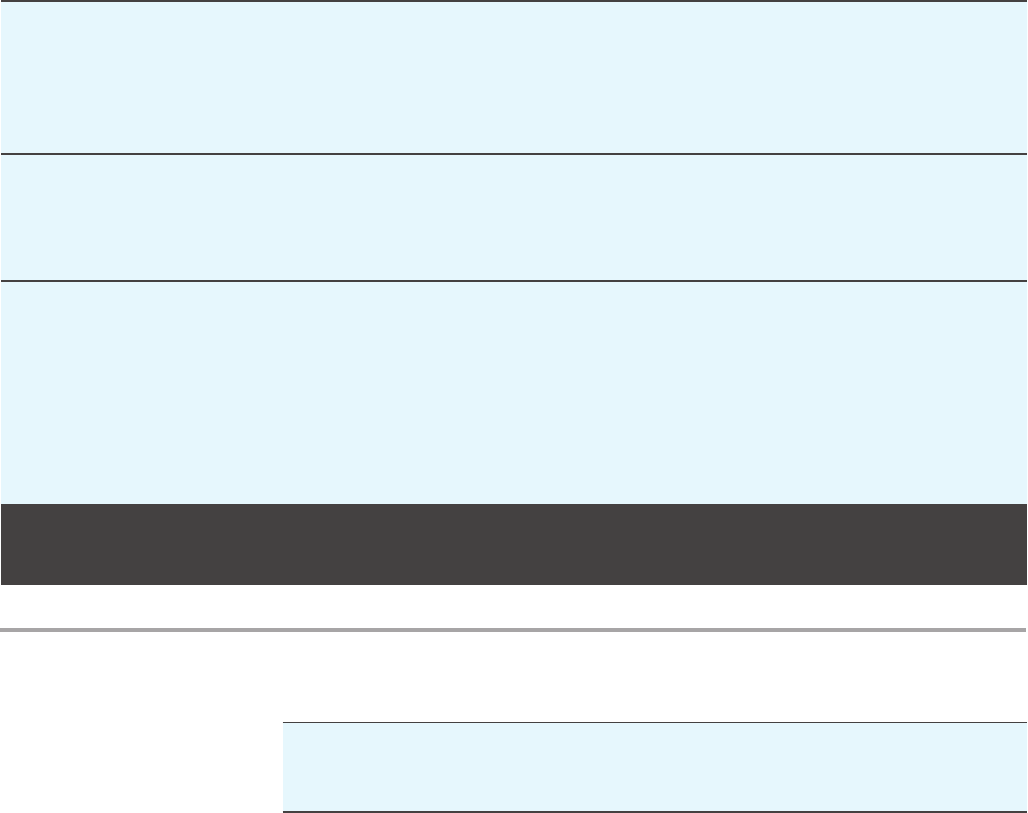
1-2 CHAPTER 1 Introduction to Financial Statements
Knowing the numbers is sometimes even a matter of cor-
porate survival. Consider the story of
Columbia Sportswear
Company, headquartered in Portland, Oregon. Gert Boyle’s
family ed Nazi Germany when she was 13 years old and then
purchased a small hat company in Oregon, Columbia Hat
Company. In 1971, Gert’s husband, who was then running the
company, died suddenly of a heart attack. Gert took over the
small, struggling company with help from her son Tim, who
was then a senior at the University of Oregon. Somehow, they
kept the company a oat. Today, Columbia has more than 4,000
employees and annual sales in excess of $1 billion. Its brands
include Columbia, Mountain Hardwear, Sorel, and Montrail.
Columbia doesn’t just focus on nancial success. Several
of its factories continue to participate in a project to increase
health awareness of female factory workers in developing
countries. Columbia is also a founding member of the Sustain-
able Apparel Coalition, which strives to reduce the environ-
mental and social impact of the apparel industry. In addition,
the company monitors all of the independent factories that
produce its products to ensure that they comply with the com-
pany’s Standards of Manufacturing Practices. These standards
address issues including forced labor, child labor, harassment,
wages and bene ts, health and safety, and the environment.
Employers such as Columbia Sportswear generally assume
that managers in all areas of the company are “ nancially lit-
erate.” To help prepare you for that, in this text you will learn
how to read and prepare nancial statements, and how to use
key tools to evaluate nancial results using basic data analytics.
Chapter Outline
LEARNING OBJECTIVES
LO 1 Identify the forms of business
organization and the uses of
accounting information.
• Forms of business organization
• Users and uses of financial
information
• Ethics in financial reporting
DO IT! 1 Business Organization
Forms
LO 2 Explain the three principal
types of business activity.
• Financing activities
• Investing activities
• Operating activities
DO IT! 2 Business Activities
LO 3 Describe the four financial
statements and how they are
prepared.
• Income statement
• Retained earnings statement
• Balance sheet
• Statement of cash flows
• Interrelationships of statements
• Other annual report elements
DO IT! 3a Financial Statements
DO IT! 3b Components of Annual
Reports
Go to the Review and Practice section at the end of the chapter for a targeted summary
and practice applications with solutions.
Visit WileyPLUS for additional tutorials and practice opportunities.
LEARNING OBJECTIVE 1
Identify the forms of business organization and the uses of accounting information.
Suppose you graduate with a business degree and decide you want to start your own business.
But what kind of business? You enjoy working with people, especially teaching them new
skills. You also spend most of your free time outdoors, kayaking, backpacking, skiing, rock
Business Organization and Accounting Information Uses
The Chapter Outline presents the chapter’s topics and subtopics, as well as practice opportunities.
c01IntroductionToFinancialStatements.indd Page 1-2 02/11/18 10:08 AM F-0590 c01IntroductionToFinancialStatements.indd Page 1-2 02/11/18 10:08 AM F-0590 /208/WB02470/XXXXXXXXXXXX/ch01/text_s/208/WB02470/XXXXXXXXXXXX/ch01/text_s
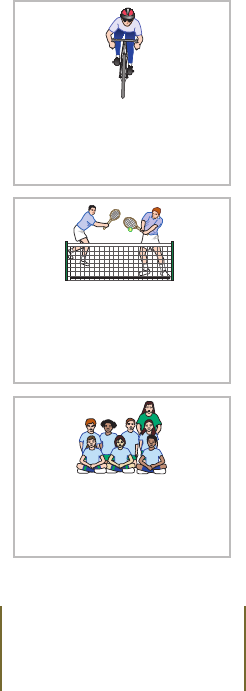
Business Organization and Accounting Information Uses 1-3
climbing, and mountain biking. You think you might be successful in opening an outdoor
guide service where you grew up, in the Sierra Nevada mountains.
Forms of Business Organization
Your next decision is to determine the organizational form of your business. You have three
choices—sole proprietorship, partnership, or corporation.
Sole Proprietorship
You might choose the sole proprietorship form for your outdoor guide service. A business
owned by one person is a
sole proprietorship. It is simple to set up and gives you control
over the business. Small owner-operated businesses such as barber shops, law o ces, and
auto repair shops are often sole proprietorships, as are farms and small retail stores.
Partnership
Another possibility is for you to join forces with other individuals to form a partnership. A
business owned by two or more persons associated as partners is a
partnership. Partnerships
often are formed because one individual does not have enough economic resources to ini-
tiate or expand the business. Sometimes partners bring unique skills or resources to the
partnership. You and your partners should formalize your duties and contributions in a writ-
ten partnership agreement. Retail and service-type businesses, including professional practices
(lawyers, doctors, architects, and certi ed public accountants), often organize as partnerships.
Corporation
As a third alternative, you might organize as a corporation. A business organized as a separate
legal entity owned by stockholders is a
corporation. Investors in a corporation receive shares
of stock to indicate their ownership claim. Buying stock in a corporation is often more attrac-
tive than investing in a partnership because shares of stock are easy to sell (transfer owner-
ship). Selling a proprietorship or partnership interest is much more involved. Also, individuals
can become stockholders by investing relatively small amounts of money (see
Alternative
Terminology
). Therefore, it is easier for corporations to raise funds. Successful corpo-
rations often have thousands of stockholders, and their stock is traded on organized stock
exchanges like the
New York Stock Exchange. Many businesses start as sole proprietorships
or partnerships and eventually incorporate.
Other factors to consider in deciding which organizational form to choose are taxes and
legal liability. If you choose a sole proprietorship or partnership, you generally receive more
favorable tax treatment than a corporation. However, proprietors and partners are personally
liable for all debts and legal obligations of the business; corporate stockholders are not. In
other words, corporate stockholders generally pay higher taxes but have no personal legal
liability. We will discuss these issues in more depth in a later chapter.
Finally, while sole proprietorships, partnerships, and corporations represent the main types
of business organizations, hybrid forms are now allowed in all states. These hybrid business
forms combine the tax advantages of partnerships with the limited liability of corporations.
Probably the most common among these hybrids types are limited liability companies (LLCs)
and subchapter S corporations. These forms are discussed extensively in business law classes.
The combined number of proprietorships and partnerships in the United States far exceeds
the number of corporations. However, the revenue produced by corporations is many times greater.
Most of the largest businesses in the United States—for example,
Coca-Cola, ExxonMobil,
General Motors, Citigroup, and Microsoft—are corporations. Because the majority of U.S.
business is done by corporations, the emphasis in this text is on the corporate form of organization.
Users and Uses of Financial Information
The purpose of nancial information is to provide inputs for decision-making. Accounting is
the information system that identi es, records, and communicates the economic events of an
organization to interested users.
ALTERNATIVE
TERMINOLOGY
Stockholders are some-
times called shareholders.
Alternative Terminology notes
present synonymous terms that
you may come across in practice.
-Simple to establish
-Owner-controlled
-Tax advantages
Sole Proprietorship
-Simple to establish
-Shared control
-Broader skills and resources
-Tax advantages
Partnership
-Easier to transfer ownership
-Easier to raise funds
-No personal liability
Corporation
c01IntroductionToFinancialStatements.indd Page 1-3 02/11/18 10:08 AM F-0590 c01IntroductionToFinancialStatements.indd Page 1-3 02/11/18 10:08 AM F-0590 /208/WB02470/XXXXXXXXXXXX/ch01/text_s/208/WB02470/XXXXXXXXXXXX/ch01/text_s
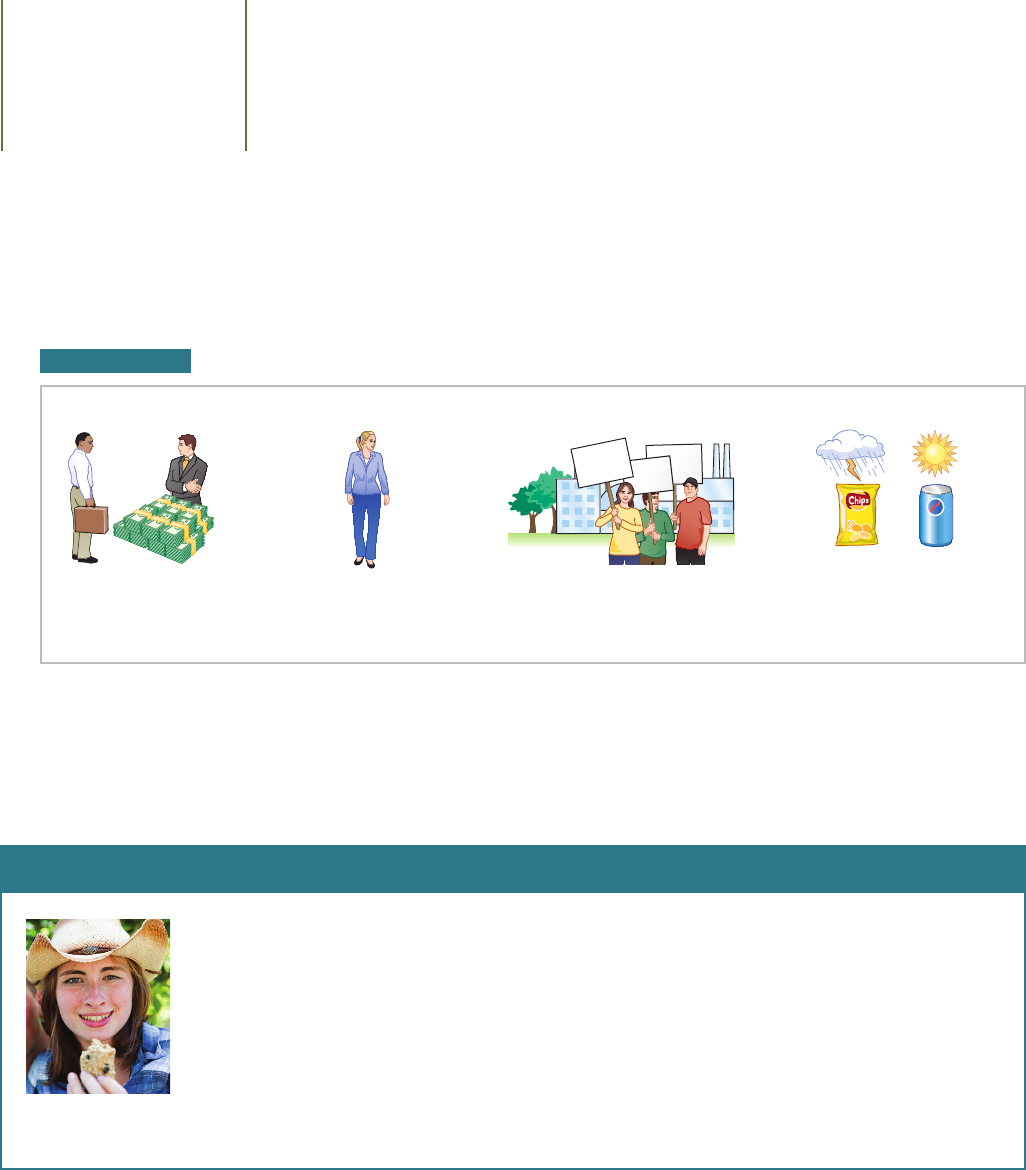
1-4 CHAPTER 1 Introduction to Financial Statements
Accounting software systems collect vast amounts of data about the economic events
experienced by a company and about the parties with whom the company engages, such as sup-
pliers and customers. Business decision-makers take advantage of this wealth of data by using
data analytics to make more informed business decisions. Data analytics involves analyzing
data, often employing both software and statistics, to draw inferences. As both data access and
analytical software improve, the use of data analytics to support decisions is becoming increas-
ingly common at virtually all types of companies (see
Helpful Hint).
Users of accounting information can be divided broadly into two groups: internal users and
external users.
Internal Users
Internal users of accounting information are managers who plan, organize, and run a busi-
ness. These include marketing managers, production supervisors, nance directors,
and company o cers. In running a business, managers must answer many important ques-
tions, as shown in
Illustration 1.1.
HELPFUL HINT
Throughout this text, we
will highlight examples
where accounting infor-
mation is used to support
business decisions using
data analytics.
To answer these and other questions, you need detailed information on a timely basis. For
internal users, accounting provides internal reports, such as nancial comparisons of operating
alternatives, projections of income from new sales campaigns, and forecasts of cash needs for
the next year. In addition, companies present summarized nancial information in the form of
nancial statements.
Accounting Across the
Organization boxes show appli-
cations of accounting informa-
tion in various business functions.
Accounting Across the Organization Clif Bar & Company
Owning a Piece of the Bar
The original Clif Bar® energy bar was cre-
ated in 1990 after six months of experimen-
tation by Gary Erickson and his mother
in her kitchen. The company has approx-
imately 1,000 employees and was named
one of Landor’s Breakaway Brands®. One of
Clif Bar & Company’s proudest moments
was the creation of an employee stock
ownership plan (ESOP). This plan gives its
employees 20% ownership of the company. The ESOP also resulted
in Clif Bar enacting an open-book management program, includ-
ing the commitment to educate all employee-owners about its -
nances. Armed with basic accounting knowledge, employees are
more aware of the nancial impact of their actions, which leads
to better decisions.
What are the bene ts to the company and to the employees
of making the nancial statements available to all employees?
(Go to WileyPLUS for this answer and additional questions.)
External Users
There are several types of external users of accounting information. Investors (owners)
use accounting information to make decisions to buy, hold, or sell stock. Creditors such as
suppliers and bankers use accounting information to evaluate the risks of selling on credit
or lending money. Some questions that investors and creditors may ask about a company are
shown in
Illustration 1.2.
Stock
On
Strike
On
Strike
On
Strike
Snacks Beverages
COLA
Questions Asked by Internal Users
Is cash sufcient to pay
dividends to
Microsoft stockholders?
Finance
Can General Motors afford
to give its employees pay
raises this year?
Human Resources
Which PepsiCo product line is
the most protable? Should any
product lines be eliminated?
Management
What price should Apple charge
for an iPhone to maximize the
company's net income?
Marketing
ILLUSTRATION 1.1 Questions that internal users ask
Helpful Hints further clarify
concepts being discussed.
© Dan Moore/
iStockphoto
c01IntroductionToFinancialStatements.indd Page 1-4 02/11/18 10:08 AM F-0590 c01IntroductionToFinancialStatements.indd Page 1-4 02/11/18 10:08 AM F-0590 /208/WB02470/XXXXXXXXXXXX/ch01/text_s/208/WB02470/XXXXXXXXXXXX/ch01/text_s
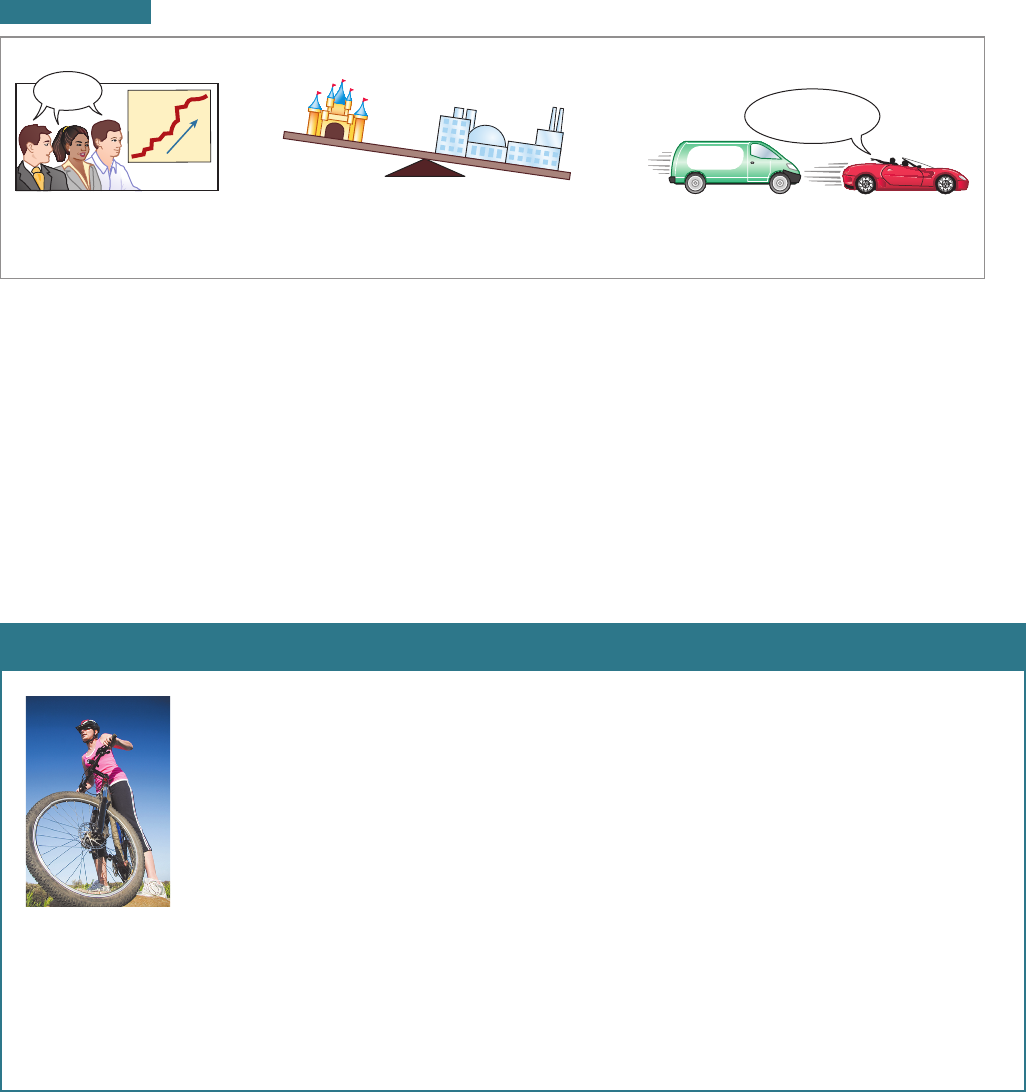
Business Organization and Accounting Information Uses 1-5
The information needs and questions of other external users vary considerably. Tax-
ing authorities, such as the Internal Revenue Service, want to know whether the company
complies with the tax laws. Customers are interested in whether a company like
General
Motors
will continue to honor product warranties and otherwise support its product lines.
Labor unions, such as the Major League Baseball Players Association, want to know whether
the owners have the ability to pay increased wages and bene ts. Regulatory agencies, such
as the Securities and Exchange Commission or the Federal Trade Commission, want to know
whether the company is operating within prescribed rules. For example,
Enron, Dynegy,
Duke Energy, and other big energy-trading companies reported record pro ts at the same
time as California was paying extremely high prices for energy and su ering from blackouts.
This disparity caused regulators to investigate the energy traders to make sure that the pro ts
were earned by legitimate and fair practices.
Ethics in Financial Reporting
People won’t gamble in a casino if they think it is “rigged.” Similarly, people won’t “play”
the stock market if they think stock prices are rigged. At one time, the nancial press was
full of articles about nancial scandals at
Enron, WorldCom, HealthSouth, and AIG.
As more scandals came to light, a mistrust of nancial reporting in general seemed to be
developing. One article in the Wall Street Journal noted that “repeated disclosures about
questionable accounting practices have bruised investors’ faith in the reliability of earnings
reports, which in turn has sent stock prices tumbling.” Imagine trying to carry on a business
or invest money if you could not depend on the nancial statements to be honestly prepared.
Information would have no credibility. There is no doubt that a sound, well-functioning
economy depends on accurate and dependable nancial reporting.
ILLUSTRATION 1.2
Questions that external users ask
What do we do
if they catch us?
Bills
Yeah!
Questions Asked by External Users
Is General Electric earning
satisfactory income?
Investors
How does Disney compare in size
and protability with Time Warner?
Investors
Will United Airlines be able
to pay its debts as they come due?
Creditors
Accounting Across the Organization
Spinning the Career Wheel
How will the study of accounting help you?
A working knowledge of accounting is de-
sirable for virtually every eld of business.
Some examples of how accounting is used
in business careers include the following.
General management: Managers of Ford
Motors
, Massachusetts General Hospital,
California State University–Fullerton, a
McDonald’s franchise, and a Trek bike
shop all need to understand accounting data
in order to make wise business decisions.
Marketing: Marketing specialists at Procter & Gamble must
be sensitive to costs and bene ts, which accounting helps them
quantify and understand. Making a sale is meaningless unless it
is a pro table sale.
Finance: Do you want to be a banker for Citicorp, an invest-
ment analyst for
Goldman Sachs, or a stock broker for Merrill
Lynch
? These elds rely heavily on accounting knowledge
to analyze nancial statements. In fact, it is di cult to get a
good job in a nance function without two or three courses in
accounting.
Real estate: Are you interested in being a real estate broker for
Prudential Real Estate? Because a third party—the bank—is
almost always involved in nancing a real estate transaction, bro-
kers must understand the numbers involved: Can the buyer a ord
to make the payments to the bank? Does the cash ow from an
industrial property justify the purchase price? What are the tax
bene ts of the purchase?
How might accounting help you? (Go to WileyPLUS for this
answer and additional questions.)
© Josef Volavka/
iStockphoto
c01IntroductionToFinancialStatements.indd Page 1-5 02/11/18 10:08 AM F-0590 c01IntroductionToFinancialStatements.indd Page 1-5 02/11/18 10:08 AM F-0590 /208/WB02470/XXXXXXXXXXXX/ch01/text_s/208/WB02470/XXXXXXXXXXXX/ch01/text_s
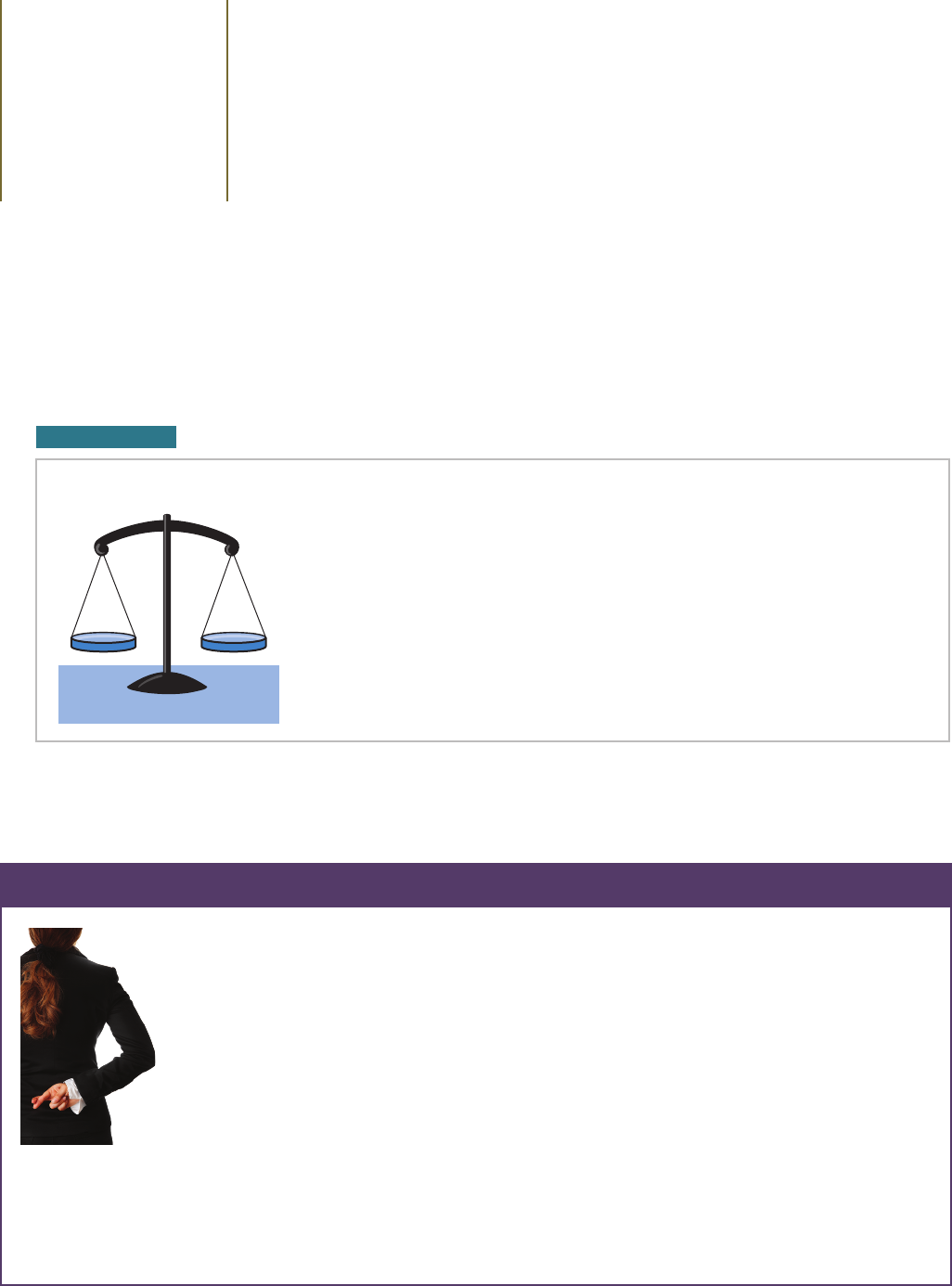
1-6 CHAPTER 1 Introduction to Financial Statements
United States regulators and lawmakers were very concerned that the economy would
su er if investors lost con dence in corporate accounting because of unethical nancial
reporting. Congress passed the
Sarbanes-Oxley Act (SOX) to reduce unethical corporate
behavior and decrease the likelihood of future corporate scandals (see
Ethics Note). As a
result of SOX, top management must now certify the accuracy of nancial information. In
addition, penalties for fraudulent nancial activity are much more severe. Also, SOX increased
both the independence of the outside auditors who review the accuracy of corporate nancial
statements and the oversight role of boards of directors.
E ective nancial reporting depends on sound ethical behavior. To sensitize you to
ethical situations and to give you practice at solving ethical dilemmas, we address ethics in
a number of ways in this text. (1) A number of the Feature Stories and other parts of the text
discuss the central importance of ethical behavior to nancial reporting. (2) Ethics Insight
boxes and marginal Ethics Notes highlight ethics situations and issues in actual business
settings. (3) Many of the People, Planet, and Pro t Insight boxes focus on ethical issues that
companies face in measuring and reporting social and environmental issues. (4) At the end
of each chapter, an Ethics Case simulates a business situa tion and asks you to put yourself
in the position of a decision-maker in that case.
When analyzing these various ethics cases and your own ethical experiences, you should
apply the three steps outlined in
Illustration 1.3.
ETHICS NOTE
Circus-founder P.T. Bar-
num is alleged to have
said, “Trust everyone,
but cut the deck.” What
Sarbanes-Oxley does is to
provide measures that (like
cutting the deck of playing
cards) help ensure that
fraud will not occur.
Ethics Notes help sensitize you
to some of the ethical issues in
accounting.
Ethics Insight Dewey & LeBoeuf LLP
I Felt the Pressure—
Would You?
“I felt the pressure.” That’s what some
of the employees of the now-defunct law
rm of
Dewey & LeBoeuf LLP indi-
cated when they helped to overstate rev-
enue and use accounting tricks to hide
losses and cover up cash shortages. These
employees worked for the former nance
director and former chief nancial o cer
(CFO) of the rm. Here are some of their
comments:
• “I was instructed by the CFO to create invoices, knowing they
would not be sent to clients. When I created these invoices, I
knew that it was inappropriate.”
• “I intentionally gave the auditors incorrect information in the
course of the audit.”
What happened here is that a small group of lower-level em-
ployees over a period of years carried out the instructions of their
bosses. Their bosses, however, seemed to have no concern as evi-
denced by various e-mails with one another in which they referred
to their nancial manipulations as accounting tricks, cooking the
books, and fake income.
Sources: Ashby Jones, “Guilty Pleas of Dewey Sta Detail the Alleged
Fraud,” Wall Street Journal (March 28, 2014); and Sara Randazzo, “Dewey
CFO Escapes Jail Time in Fraud Case Sentencing,” Wall Street Journal
(October 10, 2017).
Why did these employees lie, and what do you believe
should be their penalty for these lies? (Go to WileyPLUS for
this answer and additional questions.)
Insight boxes provide examples of business situations from various perspectives—ethics, investor,
international, and corporate social responsibility. Guideline answers to the critical thinking questions,
as well as additional questions, are available in WileyPLUS.
Solving an Ethical Dilemma
#1
ALT
#2
ALT
2. Identify and analyze
the principal elements
in the situation.
Identify the stakeholders—
persons or groups who may
be harmed or beneted. Ask
the question: What are the
responsibilities and obligations
of the parties involved?
3. Identify the alternatives,
and weigh the impact of
each alternative on various
stakeholders.
Select the most ethical
alternative, considering all the
consequences. Sometimes there
will be one right answer. Other
situations involve more than
one right solution; these
situations require you to
evaluate each alternative and
select the best one.
1. Recognize an ethical
situation and the ethical
issues involved.
Use your personal ethics to
identify ethical situations and
issues. Some businesses and
professional organizations
provide written codes of
ethics for guidance in some
business situations.
ILLUSTRATION 1.3 Steps in analyzing ethics cases
Alliance/Shutterstock
c01IntroductionToFinancialStatements.indd Page 1-6 02/11/18 10:08 AM F-0590 c01IntroductionToFinancialStatements.indd Page 1-6 02/11/18 10:08 AM F-0590 /208/WB02470/XXXXXXXXXXXX/ch01/text_s/208/WB02470/XXXXXXXXXXXX/ch01/text_s
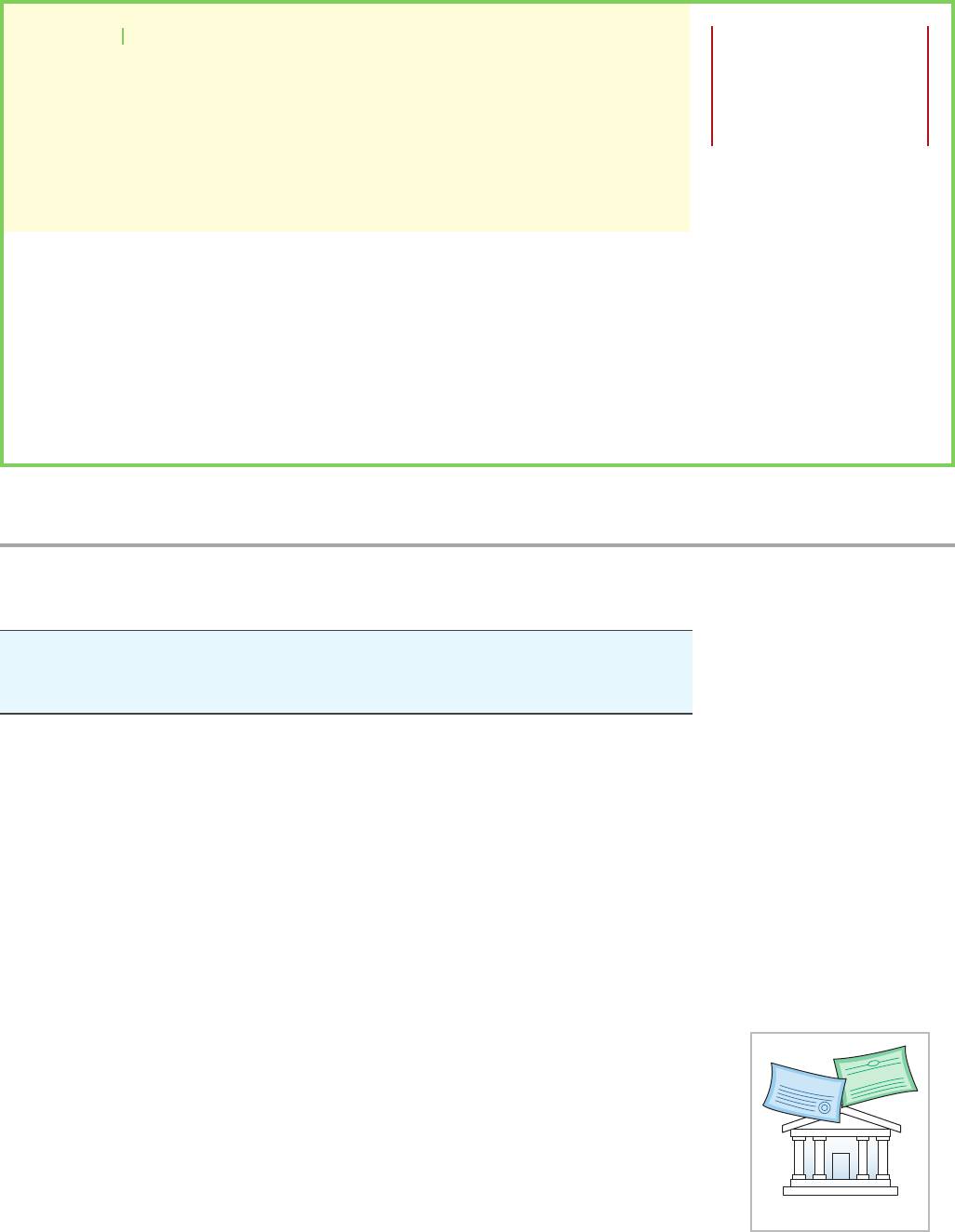
The Three Types of Business Activity 1-7
DO IT! 1 Business Organization Forms
In choosing the organizational form for your outdoor guide service, you should consider the pros
and cons of each. Identify each of the following organizational characteristics with the organiza-
tional form or forms with which it is associated.
1. Easier to raise funds. 4. Tax advantages.
2. Simple to establish. 5. Easier to transfer ownership.
3. No personal legal liability.
ACTION PLAN
• Know which organiza-
tional form best matches
the business type, size,
and preferences of the
owner(s).
Solution
1. Easier to raise funds: Corporation.
2. Simple to establish: Sole proprietorship and partnership.
3. No personal legal liability: Corporation.
4. Tax advantages: Sole proprietorship and partnership.
5. Easier to transfer ownership: Corporation.
Related exercise material: BE1.1 and DO IT! 1.1.
DO IT! exercises prompt you to stop and review the key points you have just studied. The Action Plan
o ers you tips about how to approach the problem.
LEARNING OBJECTIVE 2
Explain the three principal types of business activity.
All businesses are involved in three types of activity— nancing, investing, and operating.
For example, Gert Boyle’s parents, the founders of
Columbia Sportswear, obtained cash
through nancing to start and grow their business. Some of this nancing came from
personal savings, and some likely came from outside sources like banks. The family then
invested the cash in equipment to run the business, such as sewing equipment and delivery
vehicles. Once this equipment was in place, they could begin the operating activities of mak-
ing and selling clothing.
The accounting information system keeps track of the results of each of the various
business activities— nancing, investing, and operating. Let’s look at each type of business
activity in more detail.
Financing Activities
It takes money to make money. The two primary sources of outside funds for corporations are
borrowing money (debt nancing) and issuing (selling) shares of stock in exchange for cash
(equity nancing).
Columbia Sportswear may borrow money in a variety of ways. For example, it can take
out a loan at a bank or borrow directly from investors by issuing debt securities called bonds.
Persons or entities to whom Columbia owes money are its creditors. Amounts owed to
creditors—in the form of debt and other obligations—are called
liabilities. Speci c names
are given to di erent types of liabilities, depending on their source. Columbia may have a note
Financing
B
o
n
d
S
t
o
c
k
The Three Types of Business Activity
c01IntroductionToFinancialStatements.indd Page 1-7 02/11/18 10:08 AM F-0590 c01IntroductionToFinancialStatements.indd Page 1-7 02/11/18 10:08 AM F-0590 /208/WB02470/XXXXXXXXXXXX/ch01/text_s/208/WB02470/XXXXXXXXXXXX/ch01/text_s
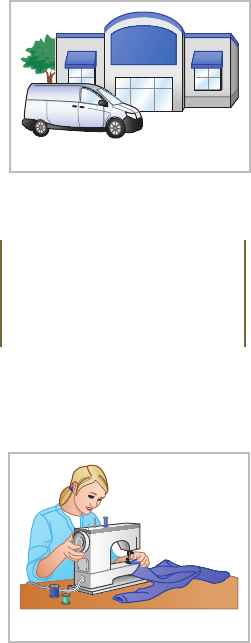
1-8 CHAPTER 1 Introduction to Financial Statements
payable to a bank for the money borrowed to purchase delivery trucks. Debt securities sold to
investors that must be repaid at a particular date some years in the future are bonds payable.
Corporations also obtain funds by selling shares of stock to investors.
Common stock is
the term used to describe the total amount paid in by stockholders for the shares they purchase.
The claims of creditors di er from those of stockholders. If you loan money to a company,
you are one of its creditors. In lending money, you specify a payment schedule (e.g., payment at
the end of three months). As a creditor, you have a legal right to be paid at the agreed time. In
the event of nonpayment, you may legally force the company to sell property to pay its debts. In
the case of nancial di culty, creditor claims must be paid before stockholders’ claims.
Stockholders, on the other hand, have no claim to corporate cash until the claims of cred-
itors are satis ed. Suppose you buy a company’s stock instead of loaning it money. You have
no legal right to expect any payments from your stock ownership until all of the company’s
creditors are paid amounts currently due. However, many corporations make payments to
stockholders on a regular basis as long as there is su cient cash to cover required payments
to creditors. These cash payments to stockholders are called
dividends.
Investing Activities
Once the company has raised cash through nancing activities, it uses that cash in investing
activities. Investing activities involve the purchase of the resources a company needs in
order to operate. A growing company purchases many resources, such as computers, delivery
trucks, furniture, and buildings. Resources owned by a business are called
assets. Di erent
types of assets are given di erent names. For example, Columbia Sportswear’s sewing equip-
ment is a type of asset referred to as property, plant, and equipment (see
Alternative
Terminology
).
Cash is one of the more important assets owned by Columbia or any other business. If a
company has excess cash that it does not need for a while, it might choose to invest in securities
(stocks or bonds) of other corporations. Investments are another example of an investing activity.
Operating Activities
Once a business has the assets it needs to get started, it begins operations. Columbia Sports-
wear is in the business of selling outdoor clothing and footwear. It sells TurboDown jackets,
Millenium snowboard pants, Sorel® snow boots, Bugaboots™, rainwear, and anything else
you might need to protect you from the elements. We call amounts earned on the sale of these
products revenues.
Revenue is the increase in assets or decrease in liabilities resulting from
the sale of goods or the performance of services in the normal course of business. For exam-
ple, Columbia records revenue when it sells a footwear product.
Revenues arise from di erent sources and are identi ed by various names depending on
the nature of the business. For instance, Columbia’s primary source of revenue is the sale of
sportswear. However, it also generates interest revenue on debt securities held as investments.
Sources of revenue common to many businesses are sales revenue, service revenue, and
interest revenue.
The company purchases its longer-lived assets through investing activities as described
earlier. Other assets with shorter lives, however, result from operating activities. For example,
supplies are assets used in day-to-day operations. Goods available for future sales to cus-
tomers are assets called inventory. Also, if Columbia sells goods to a customer and does not
receive cash immediately, then the company has a right to expect payment from that customer
in the near future. This right to receive money in the future is called an account receivable.
Before Columbia can sell a single Sorel® boot, it must purchase wool, rubber, leather,
metal lace loops, laces, and other materials. It then must process, wrap, and ship the nished
product. It also incurs costs like salaries, rents, and utilities. All of these costs, referred to as
expenses, are necessary to produce and sell the product. In accounting language,
expenses
are the cost of assets consumed or services used in the process of generating revenues.
Expenses take many forms and are identi ed by various names depending on the type
of asset consumed or service used. For example, Columbia keeps track of these types of
MS
MS
MS
Investing
ALTERNATIVE
TERMINOLOGY
Property, plant, and equip-
ment is sometimes called
xed assets.
Operating
c01IntroductionToFinancialStatements.indd Page 1-8 02/11/18 10:08 AM F-0590 c01IntroductionToFinancialStatements.indd Page 1-8 02/11/18 10:08 AM F-0590 /208/WB02470/XXXXXXXXXXXX/ch01/text_s/208/WB02470/XXXXXXXXXXXX/ch01/text_s

The Four Financial Statements 1-9
expenses: cost of goods sold (such as the cost of materials), selling expenses (such as the
cost of salespersons’ salaries), marketing expenses (such as the cost of advertising), admin-
istrative expenses (such as the salaries of administrative sta , and telephone and heating
costs incurred at the corporate o ce), interest expense (amounts of interest paid on various
debts), and income tax expense (corporate taxes paid to the government).
Columbia may also have liabilities arising from these expenses. For example, it may
purchase goods on credit from suppliers. The obligations to pay for these goods are called
accounts payable. Additionally, Columbia may have interest payable on the outstanding
amounts owed to the bank. It may also have wages payable to its employees and sales taxes
payable, property taxes payable, and income taxes payable to the government.
Columbia compares the revenues of a period with the expenses of that period to deter-
mine whether it earned a pro t. When revenues exceed expenses,
net income results. When
expenses exceed revenues, a
net loss results.
DO IT! 2 Business Activities
Classify each item as an asset, liability, common stock, revenue, or expense.
1. Cost of renting property. 4. Issuance of ownership shares.
2. Truck purchased. 5. Amount earned from performing service.
3. Notes payable. 6. Amounts owed to suppliers.
ACTION PLAN
• Classify each item
based on its economic
characteristics. Proper
classi cation of items
is critical if accounting
is to provide useful
information.
Solution
1. Cost of renting property: Expense.
2. Truck purchased: Asset.
3. Notes payable: Liability.
4. Issuance of ownership shares: Common stock.
5. Amount earned from performing service: Revenue.
6. Amounts owed to suppliers: Liability.
Related exercise material: BE1.3, DO IT! 1.2, and E1.4.
LEARNING OBJECTIVE 3
Describe the four financial statements and how they are prepared.
Assets, liabilities, expenses, and revenues are of interest to users of accounting information.
This information is arranged in the format of four di erent nancial statements, which
form the backbone of nancial accounting (see
International Note):
• To show how successfully your business performed during a period of time, you report its
revenues and expenses in an income statement.
• To indicate how much of previous income was distributed to you and the other owners
of your business in the form of dividends, and how much was retained in the business to
allow for future growth, you present a retained earnings statement.
• To present a picture at a point in time of what your business owns (its assets) and what it
owes (its liabilities), you prepare a balance sheet.
The Four Financial Statements
International Note
The primary types of nan-
cial statements required
by International Financial
Reporting Standards (IFRS)
and U.S. generally accepted
accounting principles
(GAAP) are the same. Nei-
ther IFRS nor GAAP is very
speci c regarding format
requirements for the pri-
mary nancial statements.
However, in practice, some
format di erences do exist
in presentations commonly
employed by IFRS compa-
nies as compared to GAAP
companies.
International Notes highlight di erences between
U.S. and international accounting standards.
c01IntroductionToFinancialStatements.indd Page 1-9 02/11/18 10:08 AM F-0590 c01IntroductionToFinancialStatements.indd Page 1-9 02/11/18 10:08 AM F-0590 /208/WB02470/XXXXXXXXXXXX/ch01/text_s/208/WB02470/XXXXXXXXXXXX/ch01/text_s
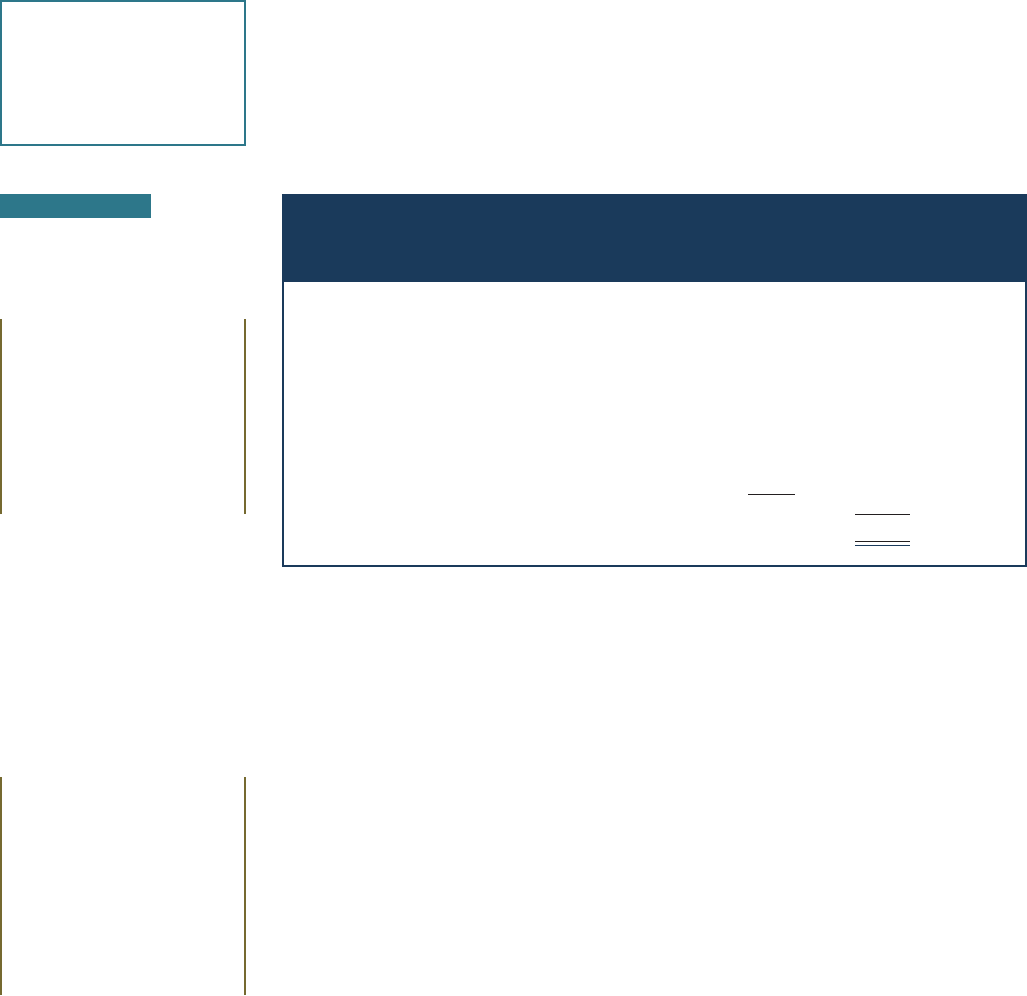
1-10 CHAPTER 1 Introduction to Financial Statements
• To show where your business obtained cash during a period of time and how that cash
was used, you present a statement of cash ows.
To introduce you to these statements, we have prepared the nancial statements for your
outdoor guide service, Sierra Corporation, after your rst month of operations. To summarize,
you o cially started your business in Truckee, California, on October 1, 2022. Sierra provides
guide services in the Lake Tahoe area of the Sierra Nevada mountains. Its promotional mate-
rials describe outdoor day trips, such as rafting, snowshoeing, and hiking, as well as multi-day
backcountry experiences. To minimize your initial investment, at this point the company has
limited outdoor equipment for customer use. Instead, your customers either bring their own
equipment or rent equipment through local out tters. The nancial statements for Sierra’s
rst month of business are provided in the following pages.
Income Statement
The income statement reports a company’s revenues and expenses and resulting net income
or loss for a period of time (see
Decision Tools). To indicate that its income statement reports
the results of operations for a speci c period of time, Sierra Corporation dates the income
statement “For the Month Ended October 31, 2022.” The income statement lists the company’s
revenues followed by its expenses. Finally, Sierra determines the net income (or net loss) by
deducting expenses from revenues. Sierra’s income statement is shown in
Illustration 1.4
(see
Helpful Hint). Congratulations, you are already showing a pro t!
Why are nancial statement users interested in net income? Investors are interested
in a company’s past net income because it provides useful information for predicting
future net income. Investors buy and sell stock based on their beliefs about a company’s
future performance. If investors believe that Sierra will be successful in the future and that
this will result in a higher stock price, they will buy its stock.
Creditors also use the income statement to predict future earnings. When a bank loans
money to a company, it believes that it will be repaid in the future. If it didn’t think it would be
repaid, it wouldn’t loan the money. Therefore, prior to making the loan the bank loan o cer
uses the income statement as a source of information to predict whether the company will be
pro table enough to repay its loan. Thus, reporting a strong pro t will make it easier for Sierra
to raise additional cash either by issuing shares of stock or borrowing.
Amounts received from issuing stock are not revenues, and amounts paid out
as dividends are not expenses. As a result, they are not reported on the income statement.
For example, Sierra Corporation does not treat as revenue the $10,000 of cash received from
issuing new stock (see Illustration 1.7), nor does it regard as a business expense the $500 of
dividends paid (see Illustration 1.5) (see
Ethics Note).
ETHICS NOTE
When companies nd
errors in previously released
income statements, they
restate those numbers.
Perhaps because of the
increased scrutiny shortly
after Sarbanes-Oxley was im-
plemented, companies led
a record 1,195 restatements.
Decision Tools that are useful
for business decision-making are
highlighted throughout the text.
A summary of the Decision Tools
is also provided in each chapter.
Decision Tools
The income statement
helps users determine if
the company’s operations
are pro table.
Sierra Corporation
Income Statement
For the Month Ended October 31, 2022
Revenues
Service revenue $10,600
Expenses
Salaries and wages expense $5,200
Rent expense 900
Supplies expense 1,500
Depreciation expense 40
Interest expense 50
Insurance expense 50
Total expenses 7,740
Net income
$ 2,860
ILLUSTRATION 1.4
Sierra Corporation’s income
statement
HELPFUL HINT
The nancial statement
heading identi es the com-
pany, the type of statement,
and the time period cov-
ered. Sometimes, another
line indicates the unit of
measure, e.g., “in thou-
sands” or “in millions.”
c01IntroductionToFinancialStatements.indd Page 1-10 02/11/18 10:08 AM F-0590 c01IntroductionToFinancialStatements.indd Page 1-10 02/11/18 10:08 AM F-0590 /208/WB02470/XXXXXXXXXXXX/ch01/text_s/208/WB02470/XXXXXXXXXXXX/ch01/text_s
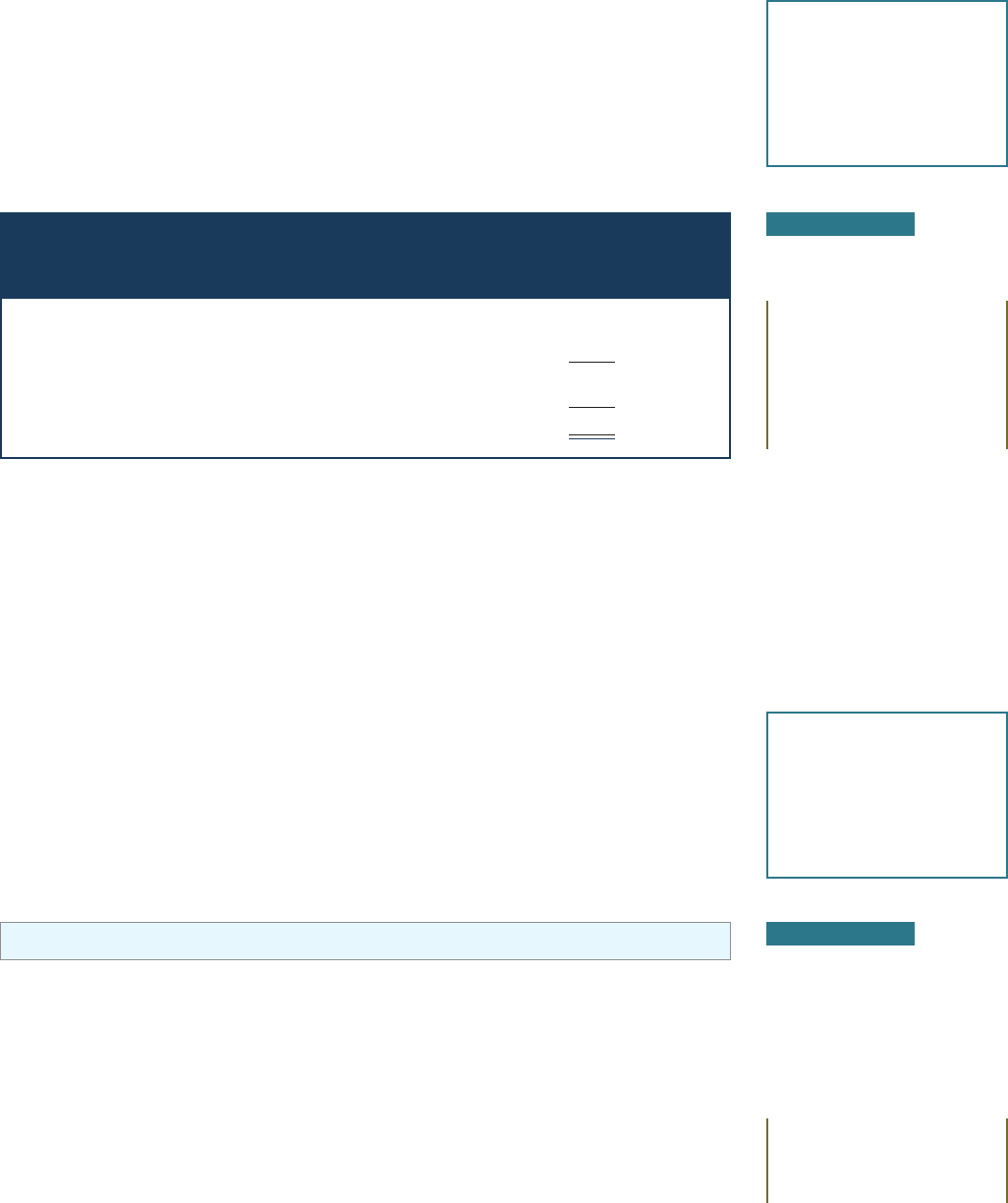
The Four Financial Statements 1-11
Retained Earnings Statement
If Sierra Corporation is pro table, at the end of each period it must decide what portion of
pro ts to pay to shareholders in dividends. In theory, it could pay all of its current-period prof-
its, but few companies do this. Why? Because they want to retain part of the pro ts to allow
for further expansion. High-growth companies, such as
Google and Facebook, often pay no
dividends.
Retained earnings is the net income retained in the corporation.
The
retained earnings statement shows the amounts and causes of changes in retained
earnings for a speci c time period (see
Decision Tools). The time period is the same as that
covered by the income statement. The beginning retained earnings amount appears on the
rst line of the statement. Then, the company adds net income and deducts dividends
to determine the retained earnings at the end of the period. If a company has a net loss, it
deducts (rather than adds) that amount in the retained earnings statement.
Illustration 1.5
presents Sierra’s retained earnings statement (see
Helpful Hint).
By monitoring the retained earnings statement, nancial statement users can evaluate
dividend payment practices. Some investors seek companies, such as
Dow Chemical, that
have a history of paying high dividends. Other investors seek companies, such as
Amazon.
com
, that reinvest earnings to increase the company’s growth instead of paying dividends.
Lenders monitor their corporate customers’ dividend payments because any money paid in
dividends reduces a company’s ability to repay its debts.
Balance Sheet
The balance sheet reports assets and claims to assets at a speci c point in time (see Decision
Tools
). Claims to assets are subdivided into two categories: claims of creditors and claims of
owners. As noted earlier, claims of creditors are called liabilities. The owners’ claim to assets
is called
stockholders’ equity.
Illustration 1.6 shows the relationship among the categories on the balance sheet in
equation form. This equation is referred to as the
basic accounting equation.
Decision Tools
The balance sheet helps
users determine if the
company relies on debt
or stockholders’ equity to
nance its assets.
This relationship is where the name “balance sheet” comes from. Assets must balance with
the claims to assets.
As you can see from looking at Sierra Corporation’s balance sheet in
Illustration 1.7,
the balance sheet presents the company’s nancial position as of a speci c date—in this
case, October 31, 2022 (see
Helpful Hint). It lists assets rst. Assets are listed in the order
of their liquidity, that is, how quickly they could be converted to cash. Assets are followed
by liabilities and stockholders’ equity (see
Alternative Terminology). Stockholders’ equity
is comprised of two parts: (1) common stock and (2) retained earnings. As noted earlier,
common stock results when the company sells new shares of stock; retained earnings is the
ALTERNATIVE
TERMINOLOGY
Liabilities are also referred
to as debt.
Decision Tools
The retained earnings
statement helps users
determine the company’s
policy toward dividends
and growth.
Sierra Corporation
Retained Earnings Statement
For the Month Ended October 31, 2022
Retained earnings, October 1 $ 0
Add: Net income 2,860
2,860
Less: Dividends 500
Retained earnings, October 31 $2,360
ILLUSTRATION 1.5
Sierra Corporation’s retained
earnings statement
HELPFUL HINT
The heading of this
statement identi es the
company, the type of
statement, and the time
period covered by the
statement.
Assets = Liabilities + Stockholders’ Equity
ILLUSTRATION 1.6
Basic accounting equation
c01IntroductionToFinancialStatements.indd Page 1-11 02/11/18 10:08 AM F-0590 c01IntroductionToFinancialStatements.indd Page 1-11 02/11/18 10:08 AM F-0590 /208/WB02470/XXXXXXXXXXXX/ch01/text_s/208/WB02470/XXXXXXXXXXXX/ch01/text_s

1-12 CHAPTER 1 Introduction to Financial Statements
Creditors analyze a company’s balance sheet to determine the likelihood that they will be
repaid. They carefully evaluate the nature of the company’s assets and liabilities. In operat-
ing Sierra’s guide service, the balance sheet will be used to determine whether cash on hand
is su cient for immediate cash needs. The balance sheet will also be used to evaluate the
relationship between debt and stockholders’ equity to determine whether the company has a
satisfactory proportion of debt and common stock nancing.
Statement of Cash Flows
The primary purpose of a statement of cash ows is to provide nancial information about
the cash receipts and cash payments of a business for a speci c period of time (see
Decision
Tools
). To help investors, creditors, and others in their analysis of a company’s cash position,
the statement of cash ows reports the cash e ects of a company’s operating, investing, and
nancing activities. In addition, the statement shows the net increase or decrease in cash
during the period, and the amount of cash at the end of the period.
Users are interested in the statement of cash ows because they want to know what is
happening to a company’s most important resource. The statement of cash ows provides
answers to these simple but important questions:
• Where did cash come from during the period?
• How was cash used during the period?
• What was the change in the cash balance during the period?
The statement of cash ows for Sierra Corporation, in
Illustration 1.8, shows that
cash increased $15,200 during the month (see
Helpful Hint). This increase resulted be-
cause operating activities (services to clients) increased cash $5,700, and nancing activities
increased cash $14,500. Investing activities used $5,000 of cash for the purchase of equipment.
Decision Tools
The statement of cash
ows helps users
determine if the company
generates enough cash
from operations to fund its
investing activities.
Sierra Corporation
Balance Sheet
October 31, 2022
Assets
Cash $15,200
Accounts receivable 200
Supplies 1,000
Prepaid insurance 550
Equipment, net 4,960
Total assets
$21,910
Liabilities and Stockholders’ Equity
Liabilities
Notes payable $ 5,000
Accounts payable 2,500
Unearned service revenue 800
Salaries and wages payable 1,200
Interest payable 50
Total liabilities $ 9,550
Stockholders’ equity
Common stock 10,000
Retained earnings 2,360
Total stockholders’ equity 12,360
Total liabilities and stockholders’ equity
$21,910
ILLUSTRATION 1.7
Sierra Corporation’s balance
sheet
HELPFUL HINT
The heading of a balance
sheet must identify the
company, the statement,
and the date.
net income retained in the corporation. Sierra has common stock of $10,000 and retained
earnings of $2,360, for total stockholders’ equity of $12,360.
c01IntroductionToFinancialStatements.indd Page 1-12 02/11/18 10:08 AM F-0590 c01IntroductionToFinancialStatements.indd Page 1-12 02/11/18 10:08 AM F-0590 /208/WB02470/XXXXXXXXXXXX/ch01/text_s/208/WB02470/XXXXXXXXXXXX/ch01/text_s
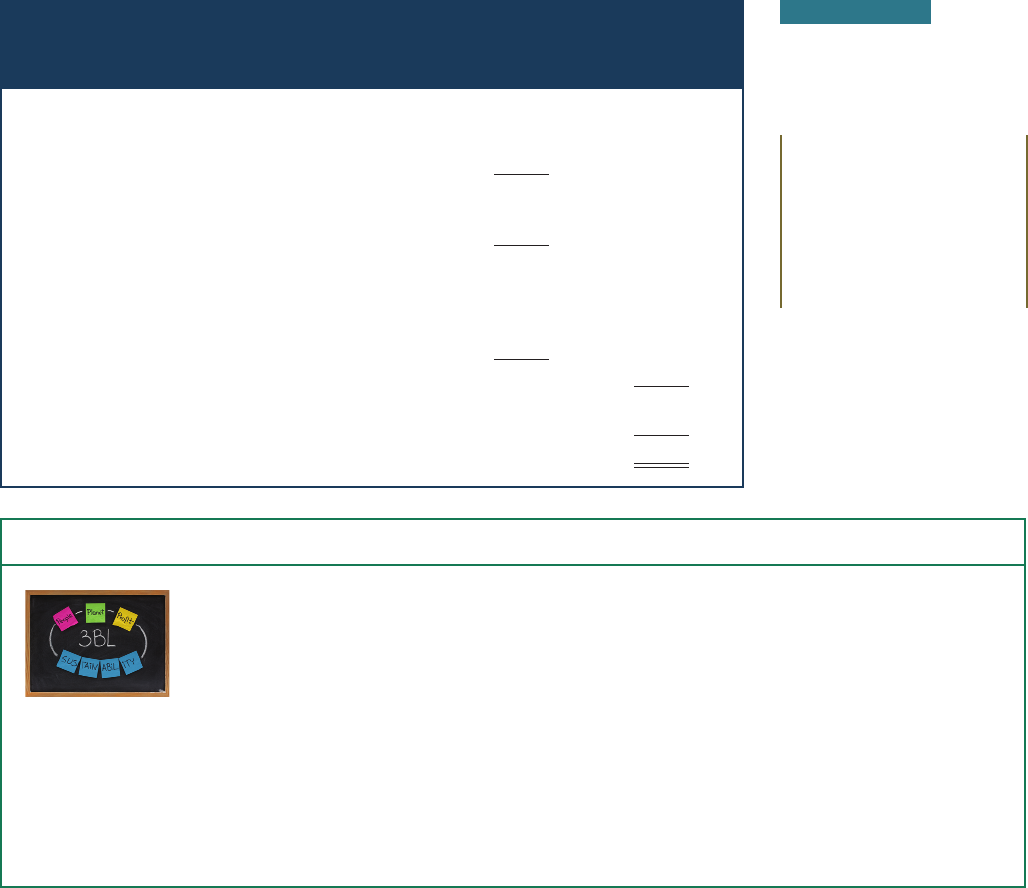
The Four Financial Statements 1-13
Interrelationships of Statements
Illustration 1.9 shows the nancial statements of Sierra Corporation (see Helpful Hints). Be-
cause the results on some nancial statements become inputs to other statements, the statements
are interrelated. These interrelationships can be seen in Sierra’s nancial statements, as follows.
1. The retained earnings statement uses the results of the income statement. Sierra reported
net income of $2,860 for the period. Net income is added to the beginning amount of
retained earnings to determine ending retained earnings.
2. The balance sheet and retained earnings statement are also interrelated. Sierra reports
the ending amount of $2,360 on the retained earnings statement as the retained earnings
amount on the balance sheet.
3. Finally, the statement of cash ows relates to information on the balance sheet. The state-
ment of cash ows shows how the Cash account changed during the period. It shows the
amount of cash at the beginning of the period, the sources and uses of cash during the
period, and the $15,200 of cash at the end of the period. The ending amount of cash shown
on the statement of cash ows must agree with the amount of cash on the balance sheet.
Study these interrelationships carefully. To prepare financial statements, you must
understand the sequence in which these amounts are determined and how each
statement impacts the next.
Sierra Corporation
Statement of Cash Flows
For the Month Ended October 31, 2022
Cash ows from operating activities
Cash receipts from operating activities $11,200
Cash payments for operating activities (5,500)
Net cash provided by operating activities $ 5,700
Cash ows from
investing activities
Purchased o ce equipment (5,000)
Net cash used by investing activities (5,000)
Cash ows from
nancing activities
Issuance of common stock 10,000
Issuance of note payable 5,000
Payment of dividend (500)
Net cash provided by nancing activities 14,500
Net increase in cash 15,200
Cash at beginning of period 0
Cash at end of period
$15,200
HELPFUL HINT
The heading of this state-
ment identi es the com-
pany, the type of statement,
and the time period covered
by the statement. Negative
numbers are shown in
parentheses.
ILLUSTRATION 1.8
Sierra Corporation’s statement
of cash ows
People, Planet, and Profit Insight
A socially responsible business does not exploit or endanger
any group of individuals. It follows fair trade practices, provides safe
environments for workers, and bears responsibility for environ-
mental damage. Granted, measurement of these factors is di cult.
How to report this information is also controversial. But many
interesting and useful e orts are underway. Throughout this text,
we provide additional insights into how companies are attempting
to meet the challenge of measuring and reporting their contribu-
tions to society, as well as their nancial results, to stockholders.
Why might a company’s stockholders be interested in its en-
vironmental and social performance? (Go to WileyPLUS for
this answer and additional questions.)
Beyond Financial Statements
Should we expand our nancial statements
beyond the income statement, retained
earnings statement, balance sheet, and
statement of cash ows? Some believe we
should take into account ecological and
social performance, in addition to nancial
results, in evaluating a company. The argument is that a com-
pany’s responsibility lies with anyone who is in uenced by its
actions. In other words, a company should be interested in ben-
e ting many di erent parties, instead of only maximizing stock-
holders’ interests.
© Marek Uliasz/
iStockphoto
c01IntroductionToFinancialStatements.indd Page 1-13 02/11/18 10:08 AM F-0590 c01IntroductionToFinancialStatements.indd Page 1-13 02/11/18 10:08 AM F-0590 /208/WB02470/XXXXXXXXXXXX/ch01/text_s/208/WB02470/XXXXXXXXXXXX/ch01/text_s
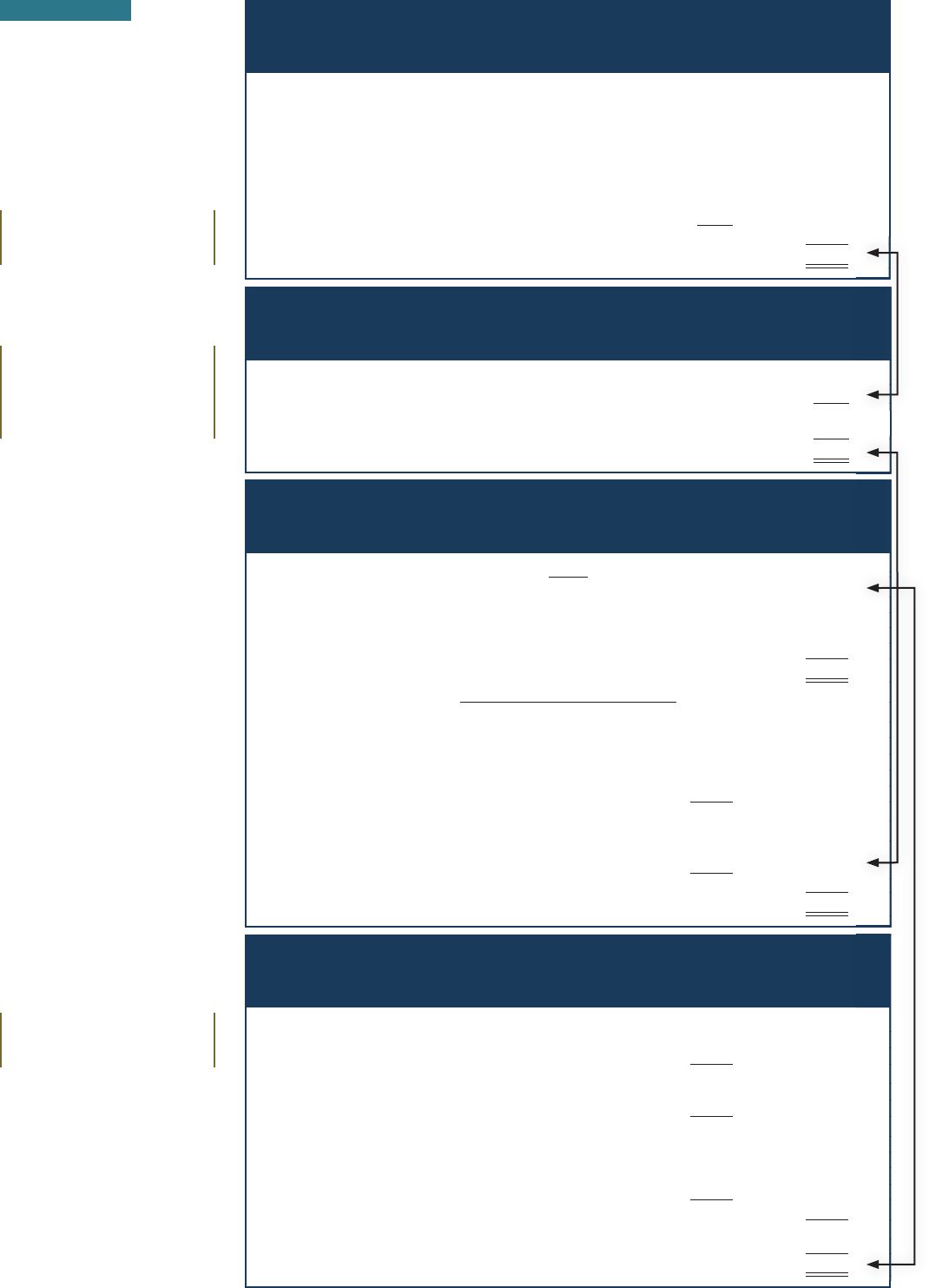
Sierra Corporation
Income Statement
For the Month Ended October 31, 2022
Revenues
Service revenue $10,600
Expenses
Salaries expense $5,200
Rent expense 900
Supplies expense 1,500
Depreciation expense 40
Interest expense 50
Insurance expense 50
Total expenses 7,740
Net income
$ 2,860
Sierra Corporation
Retained Earnings Statement
For the Month Ended October 31, 2022
Retained earnings, October 1 $ 0
Add: Net income
2,860
2,860
Less: Dividends 500
Retained earnings, October 31 $2,360
HELPFUL HINT
Note that nal sums are
double-underlined.
Sierra Corporation
Balance Sheet
October 31, 2022
Assets
Cash $15,200
Accounts receivable 200
Advertising supplies 1,000
Prepaid insurance 550
Equipment, net 4,960
Total assets
$21,910
Liabilities and Stockholders’ Equity
Liabilities
Notes payable $ 5,000
Accounts payable 2,500
Unearned service revenue 800
Salaries and wages payable 1,200
Interest payable 50
Total liabilities $ 9,550
Stockholders’ equity
Common stock 10,000
Retained earnings
2,360
Total stockholders’ equity 12,360
Total liabilities and stockholders’ equity
$21,910
Sierra Corporation
Statement of Cash Flows
For the Month Ended October 31, 2022
Cash ows from operating activities
Cash receipts from operating activities $11,200
Cash payments for operating activities (5,500)
Net cash provided by operating activities $ 5,700
Cash ows from investing activities
Purchased o ce equipment (5,000)
Net cash used by investing activities (5,000)
Cash ows from nancing activities
Issuance of common stock 10,000
Issuance of note payable 5,000
Payment of dividend (500)
Net cash provided by nancing activities 14,500
Net increase in cash 15,200
Cash at beginning of period 0
Cash at end of period
$15,200
HELPFUL HINT
The arrows in this illustra-
tion show interrelation-
ships of the four nancial
statements.
HELPFUL HINT
Negative amounts are
presented in parentheses.
ILLUSTRATION 1.9
Sierra Corporation’s nancial
statements
1-14
c01IntroductionToFinancialStatements.indd Page 1-14 02/11/18 10:08 AM F-0590 c01IntroductionToFinancialStatements.indd Page 1-14 02/11/18 10:08 AM F-0590 /208/WB02470/XXXXXXXXXXXX/ch01/text_s/208/WB02470/XXXXXXXXXXXX/ch01/text_s
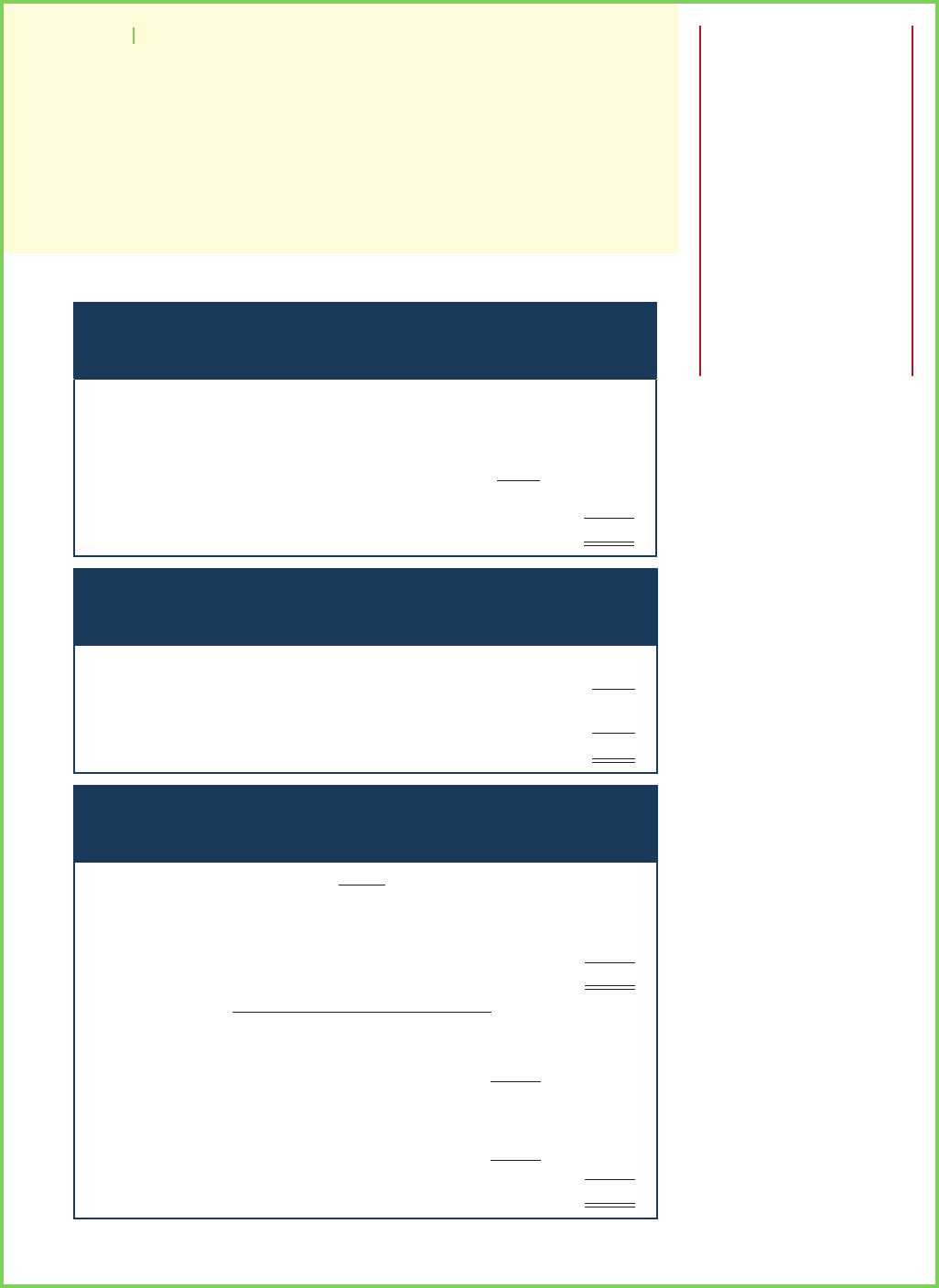
The Four Financial Statements 1-15
DO IT! 3a Financial Statements
CSU Corporation began operations on January 1, 2022. The following information is available for
CSU on December 31, 2022:
Accounts receivable 1,800 Retained earnings ? Supplies expense 200
Accounts payable 2,000 Equipment 16,000 Cash 1,400
Rent expense 9,000 Insurance expense 1,000 Dividends 600
Notes payable 5,000 Service revenue 17,000
Common stock 10,000 Supplies 4,000
Prepare an income statement, a retained earnings statement, and a balance sheet.
ACTION PLAN
• Report the revenues and
expenses for a period
of time in an income
statement.
• Show the amounts and
causes (net income and
dividends) of changes
in retained earnings
during the period in
the retained earnings
statement.
• Present the assets and
claims to those assets
(liabilities and equity) at
a speci c point in time
in the balance sheet.
Solution
CSU Corporation
Income Statement
For the Year Ended December 31, 2022
Revenues
Service revenue $17,000
Expenses $9,000
Rent expense 1,000
Insurance expense 200
Supplies expense
Total expenses 10,200
Net income
$ 6,800
CSU Corporation
Retained Earnings Statement
For the Year Ended December 31, 2022
Retained earnings, January 1 $ 0
Add: Net income 6,800
6,800
Less: Dividends 600
Retained earnings, December 31
$6,200
CSU Corporation
Balance Sheet
December 31, 2022
Assets
Cash $ 1,400
Accounts receivable 1,800
Supplies 4,000
Equipment 16,000
Total assets
$23,200
Liabilities and Stockholders’ Equity
Liabilities
Notes payable $ 5,000
Accounts payable 2,000
Total liabilities $ 7,000
Stockholders’ equity
Common stock 10,000
Retained earnings 6,200
Total stockholders’ equity 16,200
Total liabilities and stockholders’ equity
$23,200
Related exercise material: BE1.5, BE1.6, BE1.7, BE1.8, BE1.9, BE1.10, DO IT! 1.3a, E1.5, E1.6, E1.7, E1.8, E1.9,
E1.10, E1.11, E1.12, E1.13, E1.14, E1.15, and E1.18.
c01IntroductionToFinancialStatements.indd Page 1-15 02/11/18 10:08 AM F-0590 c01IntroductionToFinancialStatements.indd Page 1-15 02/11/18 10:08 AM F-0590 /208/WB02470/XXXXXXXXXXXX/ch01/text_s/208/WB02470/XXXXXXXXXXXX/ch01/text_s
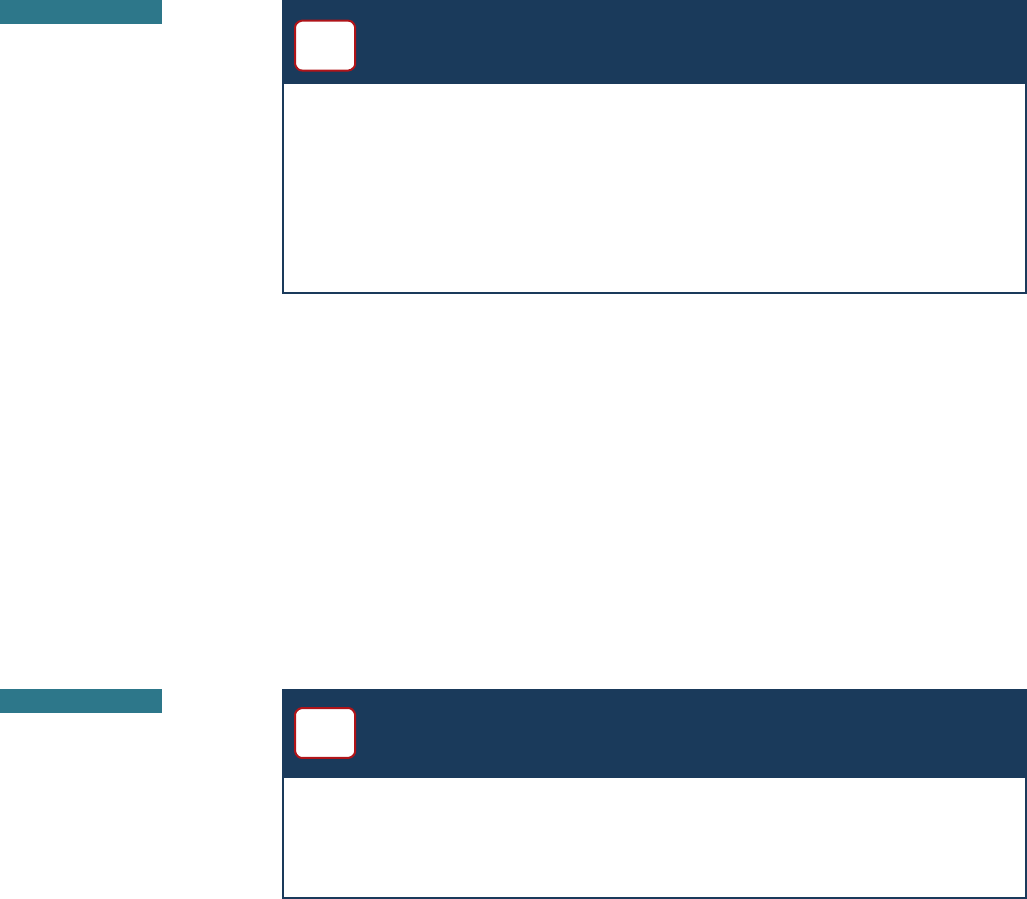
1-16 CHAPTER 1 Introduction to Financial Statements
Other Elements of an Annual Report
Publicly traded U.S. companies must provide shareholders with an annual report. The an-
nual report always includes the nancial statements introduced in this chapter. The annual
report also includes other important information such as a management discussion and
analysis section, notes to the nancial statements, and an independent auditor’s report. No
analysis of a company’s nancial situation and performance is complete without a review
of these items.
Management Discussion and Analysis
The management discussion and analysis (MD&A) section presents management’s
views on the company’s ability to pay near-term obligations, its ability to fund opera-
tions and expansion, and its results of operations. Management must highlight favorable
or unfavorable trends and identify signi cant events and uncertainties that a ect these three
factors. This discussion obviously involves a number of subjective estimates and opinions.
A brief excerpt from the MD&A section of
Columbia Sportswear’s annual report, which
addresses its liquidity requirements, is presented in
Illustration 1.10.
Notes to the Financial Statements
Explanatory notes and supporting schedules accompany every set of nancial statements
and are an integral part of the statements. The
notes to the nancial statements clarify
the nancial statements and provide additional detail. Information in the notes does not
have to be quanti able (numeric). Examples of notes are descriptions of the signi cant
accounting policies and methods used in preparing the statements, explanations of uncer-
tainties and contingencies, and various statistics and details too voluminous to be included
in the statements. The notes are essential to understanding a company’s operating perfor-
mance and nancial position.
Illustration 1.11 is an excerpt from the notes to Columbia Sportswear’s nancial
statements. It describes the methods that the company uses to account for revenues.
Columbia Sportswear Company
Management’s Discussion and Analysis of
Seasonality and Variability of Business
Our operations are a ected by seasonal trends typical in the outdoor apparel and footwear industry
and have historically resulted in higher sales and pro ts in the third and fourth calendar quarters.
This pattern has resulted primarily from the timing of shipments of fall season products to whole-
sale customers in the third and fourth quarters and proportionally higher sales in our direct-to-
consumer channels in the fourth quarter, combined with an expense base that is spread more
consistent throughout the year. We believe that our liquidity requirements for at least the next
12 months will be adequately covered by existing cash, cash provided by operations and existing
short-term borrowing arrangements.
Real
World
ILLUSTRATION 1.10
Columbia Sportswear’s
management discussion and
analysis
Columbia Sportswear Company
Notes to Financial Statements
Revenue Recognition
We record wholesale, distributor, e-commerce and licensed product revenues when title passes and
the risks and rewards of ownership have passed to the customer. Title generally passes upon ship-
ment to or upon receipt by the customer depending on the terms of sale with the customer. Retail
store revenues are recorded at the time of sale.
Real
World
ILLUSTRATION 1.11
Notes to Columbia Sports-
wear’s nancial statements
c01IntroductionToFinancialStatements.indd Page 1-16 02/11/18 10:08 AM F-0590 c01IntroductionToFinancialStatements.indd Page 1-16 02/11/18 10:08 AM F-0590 /208/WB02470/XXXXXXXXXXXX/ch01/text_s/208/WB02470/XXXXXXXXXXXX/ch01/text_s

The Four Financial Statements 1-17
Auditor’s Report
An auditor’s report is prepared by an independent outside auditor. It states the auditor’s
opinion as to the fairness of the presentation of the nancial position and results of operations
and their conformance with generally accepted accounting principles.
An auditor is an accounting professional who conducts an independent examina-
tion of a company’s nancial statements. Only accountants who meet certain criteria and
thereby attain the designation
certi ed public accountant (CPA) may perform audits. If
the auditor is satis ed that the nancial statements provide a fair representation of the com-
pany’s nancial position and results of operations in accordance with generally accepted
accounting principles, then the auditor expresses an unquali ed opinion. If the auditor
expresses anything other than an unquali ed opinion, then readers should only use the
nancial statements with caution. That is, without an unquali ed opinion, we cannot have
complete con dence that the nancial statements give an accurate picture of the company’s
nancial health. For example,
Blockbuster, Inc.’s auditor at one time stated that its nan-
cial situation raised “substantial doubt about the Company’s ability to continue as a going
concern.”
Illustration 1.12 is an excerpt from the auditor’s report from Columbia Sportswear’s
2016 annual report. Columbia received an unquali ed opinion from its auditor,
Deloitte &
Touche
.
Columbia Sportswear Company
Excerpt from Auditor’s Report
In our opinion, such consolidated nancial statements present fairly, in all ma terial respects, the
nancial position of Columbia Sportswear Company and subsidiaries as of December 31, 2016 and
2015, and the results of their operations and their cash ows for each of the three years in the period
ended December 31, 2016, in conformity with accounting principles generally accepted in the
United States of America. Also, in our opinion, such nancial statement schedules, when consid-
ered in relation to the basic consolidated nancial statements taken as a whole, presents fairly, in
all material respects, the information set forth therein.
Real
World
ILLUSTRATION 1.12
Excerpt from auditor’s report
on Columbia Sportswear’s
nancial statements
DO IT! 3b Components of Annual Reports
State whether each of the following items is most closely associated with the management discus-
sion and analysis (MD&A), the notes to the nancial statements, or the auditor’s report.
1. Descriptions of signi cant accounting policies.
2. Unquali ed opinion.
3. Explanations of uncertainties and contingencies.
4. Description of ability to fund operations and expansion.
5. Description of results of operations.
6. Certi ed public accountant (CPA).
Solution
1. Descriptions of signi cant accounting policies: Notes.
2. Unquali ed opinion: Auditor’s report.
3. Explanations of uncertainties and contingencies: Notes.
4. Description of ability to fund operations and expansion: MD&A.
5. Description of results of operations: MD&A.
6. Certi ed public accountant (CPA): Auditor’s report.
Related exercise material: BE1.11, DO IT! 1.3b, and E1.21.
ACTION PLAN
• Realize that nancial
statements provide
information about a
company’s performance
and nancial position.
• Be familiar with the
other elements of
the annual report in
order to gain a fuller
understanding of a
company.
c01IntroductionToFinancialStatements.indd Page 1-17 02/11/18 10:08 AM F-0590 c01IntroductionToFinancialStatements.indd Page 1-17 02/11/18 10:08 AM F-0590 /208/WB02470/XXXXXXXXXXXX/ch01/text_s/208/WB02470/XXXXXXXXXXXX/ch01/text_s

1-18 CHAPTER 1 Introduction to Financial Statements
There is a good chance that you may have never heard of VF Corporation. There is also a very
good chance that you are wearing one of VF’s products right now. VF owns North Face, Lee, Vans,
Nautica, Wrangler, Timberland, and numerous other brands. VF is a direct competitor to
Columbia
Sportswear
. Suppose that you are considering investing in shares of VF’s common stock.
Instructions
Answer these questions related to your decision whether to invest.
a. What nancial statements should you evaluate?
b. What should these nancial statements tell you?
c. Do you care if the nancial statements have been audited? Explain.
d. Appendix B contains nancial statements for Columbia, and Appendix C contains those for
VF. You can make many comparisons between Columbia and VF in terms of their respective
results from operations and nancial position. Compare their respective total assets, total
revenues, and net cash provided by operating activities for 2016.
USING THE DECISION TOOLS VF Corporation
Solution
a. Before you invest, you should evaluate the income statement, retained earnings statement,
balance sheet, and statement of cash ows.
b. You would probably be most interested in the income statement because it tells about past
performance and thus gives an indication of future performance. The retained earnings
statement provides a record of the company’s dividend history. The balance sheet reveals
the relationship between assets and liabilities. The statement of cash ows reveals where the
company is getting and spending its cash. This is especially important for a company that
wants to grow.
c. You would want audited nancial statements. These statements indicate that a CPA (certi-
ed public accountant) has examined and expressed an opinion that the statements present
fairly the nancial position and results of operations of the company. Investors and creditors
should not make decisions without studying audited nancial statements.
d. Many interesting comparisons can be made between the two companies (all numbers are
in thousands). Columbia is smaller, with total assets of $2,013,894 versus $9,739,287 for VF,
and it has lower revenue—$2,377,045 versus $12,019,003 for VF. In addition, Columbia’s net
cash provided by operating activities of $275,167 is less than VF’s $1,477,919. However, while
useful, these basic measures are not enough to determine whether one company is a better
investment than the other. In later chapters, you will learn tools that will allow you to com-
pare the relative pro tability and nancial health of these and other companies.
Using the Decision Tools com-
prehensive exercises ask you to
apply business information and
the decision tools presented in
the chapter. Most of these exercis-
es are based on the companies
highlighted in the Feature Story.
The Review and Practice section provides opportunities for students to review key
concepts and terms as well as complete multiple-choice questions, brief exercises,
exercises, and a comprehensive problem. Detailed solutions are also included.
Review and Practice
Learning Objectives Review
1 Identify the forms of business organization and the uses
of accounting information.
A sole proprietorship is a business owned by one person. A partner-
ship is a business owned by two or more people associated as partners.
A corporation is a separate legal entity for which evidence of owner-
ship is provided by shares of stock.
Internal users are managers who need accounting informa-
tion to plan, organize, and run business operations. The primary
external users are investors and creditors. Investors (stockholders)
use accounting information to decide whether to buy, hold, or sell
c01IntroductionToFinancialStatements.indd Page 1-18 02/11/18 10:08 AM F-0590 c01IntroductionToFinancialStatements.indd Page 1-18 02/11/18 10:08 AM F-0590 /208/WB02470/XXXXXXXXXXXX/ch01/text_s/208/WB02470/XXXXXXXXXXXX/ch01/text_s
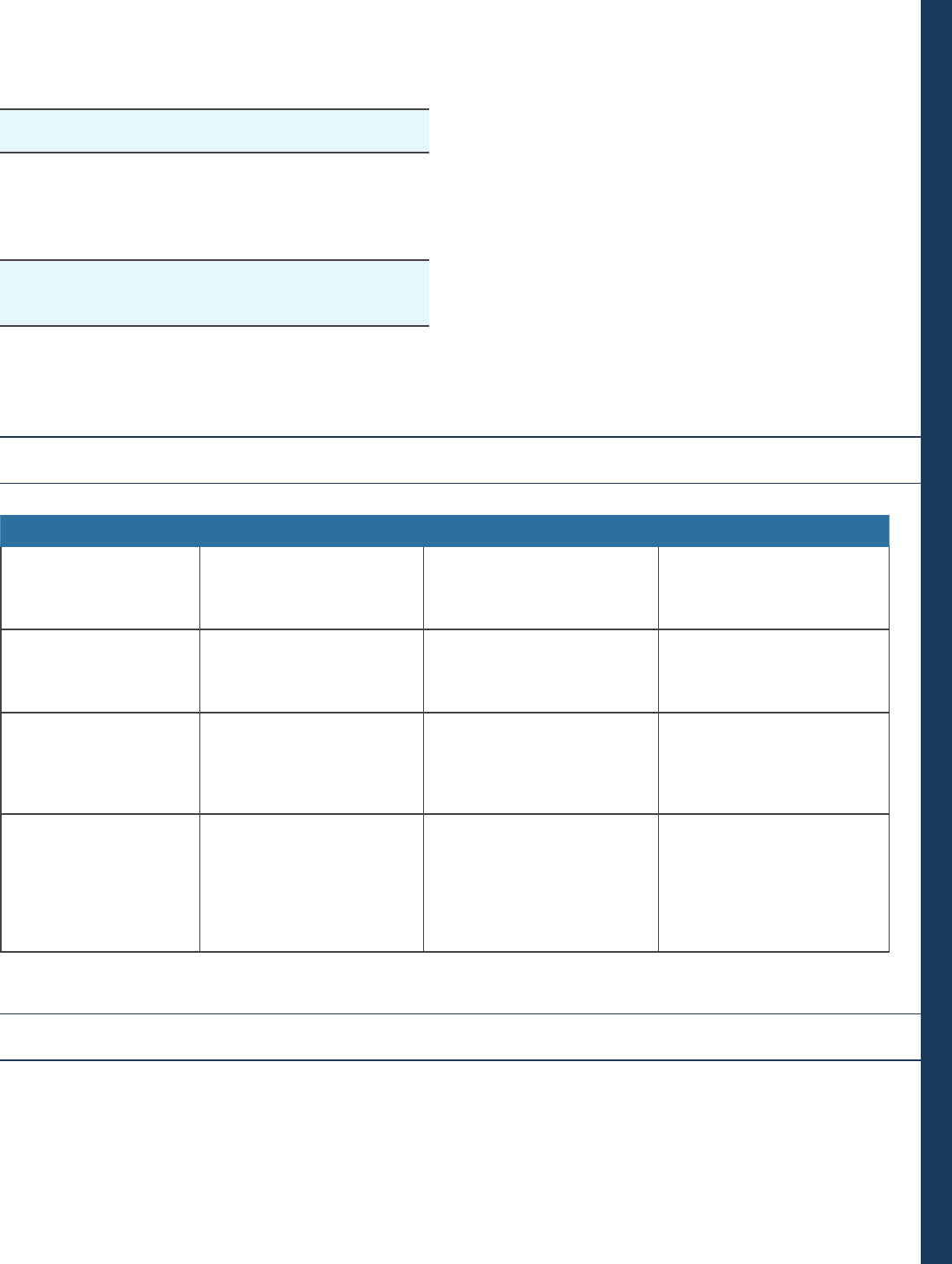
Glossary Review 1-19
shares of a company’s stock. Creditors (suppliers and bankers) use
accounting information to assess the risk of granting credit or loan-
ing money to a business. Other groups who have an indirect interest
in a business are taxing authorities, customers, labor unions, and
regulatory agencies.
2 Explain the three principal types of business activity.
Financing activities involve collecting the necessary funds to support
the business. Investing activities involve acquiring the resources nec-
essary to run the business. Operating activities involve putting the re-
sources of the business into action to generate a pro t.
3 Describe the four financial statements and how they are
prepared.
An income statement presents the revenues and expenses of a com-
pany for a speci c period of time. A retained earnings statement
summarizes the changes in retained earnings that have occurred for
a speci c period of time. A balance sheet reports the assets, liabilities,
and stockholders’ equity of a business at a speci c date. A statement
of cash ows summarizes information concerning the cash in ows
(receipts) and out ows (payments) for a speci c period of time.
Assets are resources owned by a business. Liabilities are the debts
and obligations of the business. Liabilities represent claims of credi-
tors on the assets of the business. Stockholders’ equity represents the
claims of owners on the assets of the business. Stockholders’ equity
is subdivided into two parts: common stock and retained earnings.
The basic accounting equation is Assets = Liabilities + Stockholders’
Equity.
Within the annual report, the management discussion and anal-
ysis provides management’s interpretation of the company’s results
and nancial position as well as a discussion of plans for the future.
Notes to the nancial statements provide additional explanation or
detail to make the nancial statements more informative. The audi-
tor’s report expresses an opinion as to whether the nancial state-
ments present fairly the company’s results of operations and nancial
position.
Decision Tools Review
Decision Checkpoints Info Needed for Decision Tool to Use for Decision How to Evaluate Results
Are the company’s
operations pro table?
Income statement The income statement reports a
company’s revenues and expenses
and resulting net income or loss
for a period of time
If the company’s revenues exceed
its expenses, it will report net
income; otherwise, it will report
a net loss.
What is the company’s
policy toward dividends
and growth?
Retained earnings
statement
The retained earnings statement
reports how much of this year’s
income the company paid out in
dividends to shareholders
A company striving for rapid
growth will pay a low (or no)
dividend.
Does the company rely
primarily on debt or stock-
holders’ equity to nance its
assets?
Balance sheet The balance sheet reports the
company’s resources and claims
to those resources; there are two
types of claims: liabilities and
stockholders’ equity
Compare the amount of debt
versus the amount of stockholders’
equity to determine whether the
company relies more on creditors
or owners for its nancing.
Does the company generate
su cient cash from
operations to fund its
investing activities?
Statement of cash ows The statement of cash ows shows
the amount of net cash provided
or used by operating activities,
investing activities, and nancing
activities
Compare the amount of net cash
provided by operating activities
with the amount of net cash
used by investing activities. Any
de ciency in cash from operating
activities must be made up with
cash from nancing activities.
Glossary Review
Accounting The information system that identi es, records, and
communicates the economic events of an organization to interested
users. (p. 1-3).
Annual report A report prepared by corporate management that pres-
ents nancial information including nancial statements, a management
discussion and analysis section, notes, and an independent auditor’s
report. (p. 1-16).
Assets Resources owned by a business. (p. 1-8).
Auditor’s report A report prepared by an independent outside auditor
stating the auditor’s opinion as to the fairness of the presentation of the
nancial position and results of operations and their conformance with
generally accepted accounting principles. (p. 1-17).
Balance sheet A nancial statement that reports the assets and claims
to those assets at a speci c point in time. (p. 1-11).
c01IntroductionToFinancialStatements.indd Page 1-19 02/11/18 10:08 AM F-0590 c01IntroductionToFinancialStatements.indd Page 1-19 02/11/18 10:08 AM F-0590 /208/WB02470/XXXXXXXXXXXX/ch01/text_s/208/WB02470/XXXXXXXXXXXX/ch01/text_s

1-20 CHAPTER 1 Introduction to Financial Statements
Basic accounting equation Assets = Liabilities + Stockholders’
Equity. (p. 1-11).
Certified public accountant (CPA) An individual who has met cer-
tain criteria and is thus allowed to perform audits of corporations. (p. 1-17).
Common stock Term used to describe the total amount paid in by
stockholders for the shares they purchase. (p. 1-8).
Corporation A business organized as a separate legal entity owned by
stockholders. (p. 1-3).
Dividends Payments of cash from a corporation to its stockholders.
(p. 1-8).
Expenses The cost of assets consumed or services used in the process of
generating revenues. (p. 1-8).
Income statement A nancial statement that reports a company’s
revenues and expenses and resulting net income or net loss for a speci c
period of time. (p. 1-10).
Liabilities Amounts owed to creditors in the form of debts and other
obligations. (p. 1-7).
Management discussion and analysis (MD&A) A section of the
annual report that presents management’s views on the company’s ability
to pay near-term obligations, its ability to fund operations and expansion,
and its results of operations. (p. 1-16).
Net income The amount by which revenues exceed expenses. (p. 1-9).
Net loss The amount by which expenses exceed revenues. (p. 1-9).
Notes to the financial statements Notes clarify information
presented in the nancial statements and provide additional detail.
(p. 1-16).
Partnership A business owned by two or more persons associated as
partners. (p. 1-3).
Retained earnings The amount of net income retained in the corpo-
ration. (p. 1-11).
Retained earnings statement A nancial statement that summa-
rizes the amounts and causes of changes in retained earnings for a speci c
time period. (p. 1-11).
Revenue The increase in assets or decrease in liabilities resulting from
the sale of goods or the performance of services in the normal course of
business. (p. 1-8).
Sarbanes-Oxley Act (SOX) Regulations passed by Congress to reduce
unethical corporate behavior. (p. 1-6).
Sole proprietorship A business owned by one person. (p. 1-3).
Statement of cash flows A nancial statement that provides nancial
information about the cash receipts and cash payments of a business for a
speci c period of time. (p. 1-12).
Stockholders’ equity The owners’ claim to assets. (p. 1-11).
1. (LO 1) Which is not one of the three forms of business
organization?
a. Sole proprietorship.
b. Creditorship.
c. Partnership.
d. Corporation.
2. (LO 1) Which is an advantage of corporations relative to partner-
ships and sole proprietorships?
a. Lower taxes.
b. Harder to transfer ownership.
c. Reduced legal liability for investors.
d. Most common form of organization.
3. (LO 1) Which statement about users of accounting information is
incorrect?
a. Management is considered an internal user.
b. Taxing authorities are considered external users.
c. Present creditors are considered external users.
d. Regulatory authorities are considered internal users.
4. (LO 1) Which of the following did not result from the Sarbanes-
Oxley Act?
a. Top management must now certify the accuracy of nancial
information.
b. Penalties for fraudulent activity increased.
c. Independence of auditors increased.
d. Tax rates on corporations increased.
5. (LO 2) Which is not one of the three primary business
activities?
a. Financing.
b. Operating.
c. Advertising.
d. Investing.
6. (LO 2) Which of the following is an example of a nancing
activity?
a. Issuing shares of common stock.
b. Selling goods on account.
c. Buying delivery equipment.
d. Buying inventory.
7. (LO 2) Net income will result during a time period when:
a. assets exceed liabilities.
b. assets exceed revenues.
c. expenses exceed revenues.
d. revenues exceed expenses.
8. (LO 3) The nancial statements for Macias Corporation contained
the following information.
Accounts receivable $ 5,000
Sales revenue 75,000
Cash 15,000
Salaries and wages expense 20,000
Rent expense 10,000
What was Macias Corporation’s net income?
a. $60,000.
b. $15,000.
c. $65,000.
d. $45,000.
9. (LO 3) What section of a statement of cash ows indicates the
cash spent on new equipment during the past accounting period?
a. The investing activities section.
b. The operating activities section.
c. The nancing activities section.
d. The statement of cash ows does not give this information.
Practice Multiple-Choice Questions
c01IntroductionToFinancialStatements.indd Page 1-20 02/11/18 10:08 AM F-0590 c01IntroductionToFinancialStatements.indd Page 1-20 02/11/18 10:08 AM F-0590 /208/WB02470/XXXXXXXXXXXX/ch01/text_s/208/WB02470/XXXXXXXXXXXX/ch01/text_s

Practice Multiple-Choice Questions 1-21
10. (LO 3) Which statement presents information as of a speci c
point in time?
a. Income statement.
b. Balance sheet.
c. Statement of cash ows.
d. Retained earnings statement.
11. (LO 3) Which nancial statement reports assets, liabilities, and
stockholders’ equity?
a. Income statement.
b. Retained earnings statement.
c. Balance sheet.
d. Statement of cash ows.
12. (LO 3) Stockholders’ equity represents:
a. claims of creditors.
b. claims of employees.
c. the di erence between revenues and expenses.
d. claims of owners.
13. (LO 3) As of December 31, 2022, Rockford Corporation has assets
of $3,500 and stockholders’ equity of $1,500. What are the liabilities
for Rockford as of December 31, 2022?
a. $1,500.
b. $1,000.
c. $2,500.
d. $2,000.
14. (LO 3) The element of a corporation’s annual report that de-
scribes the corporation’s accounting methods is/are the:
a. notes to the nancial statements.
b. management discussion and analysis.
c. auditor’s report.
d. income statement.
15. (LO 3) The element of the annual report that presents an opinion
regarding the fairness of the presentation of the nancial position and
results of operations is/are the:
a. income statement.
b. auditor’s opinion.
c. balance sheet.
d. comparative statements.
Solutions
1. b. Creditorship is not a form of business organization. The other
choices are incorrect because (a) sole proprietorship, (c) partnership,
and (d) corporation are all forms of business organization.
2. c. An advantage of corporations is that investors are not personally
liable for debts of the business. The other choices are incorrect be-
cause (a) lower taxes, (b) harder to transfer ownership, and (d) most
common form of organization are not true of corporations.
3. d. Regulatory authorities are considered external, not internal,
users. The other choices are true statements.
4. d. The Sarbanes-Oxley Act (SOX) was created to reduce unethical
corporate behavior and decrease the likelihood of future corporate
scandals, not to address tax rates. The other choices are incorrect be-
cause (a) top management must now certify the accuracy of nancial
information, (b) penalties for fraudulent activity increased, and (c)
increased independence of auditors all resulted from SOX.
5. c. Advertising is a type of operating activity. The other choices are
incorrect because (a) nancing, (b) operating, and (d) investing are
the three primary business activities.
6. a. Issuing shares of common stock is a nancing activity. The other
choices are incorrect because (b) selling goods on account is an oper-
ating activity, (c) buying delivery equipment is an investing activity,
and (d) buying inventory is an operating activity.
7. d. When a company earns more revenues than expenses, it will
report net income during a time period. The other choices are incor-
rect because (a) assets and liabilities are on the balance sheet, not the
income statement; (b) assets are on the balance sheet, not the income
statement; and (c) net income results when revenues exceed expenses,
not when expenses exceed revenues.
8. d. Net income = Sales revenue ($75,000) − Salaries and wages ex-
pense ($20,000) − Rent expense ($10,000) = $45,000. The other choices
are therefore incorrect.
9. a. The investing activities section of the statement of cash ows
provides information about property, plant, and equipment accounts,
not (b) the operating activities section or (c) the nancing activities
section. Choice (d) is incorrect as the statement of cash ows does
provide this information.
10. b. The balance sheet presents information as of a speci c point
in time. The other choices are incorrect because the (a) income state-
ment, (c) statement of cash ows, and (d) retained earnings state-
ment all cover a period of time.
11. c. The balance sheet is a formal presentation of the accounting
equation, such that Assets = Liabilities + Stockholders’ Equity, not
the (a) income statement, (b) retained earnings statement, or (d)
statement of cash ows.
12. d. Stockholders’ equity represents claims of owners. The other
choices are incorrect because (a) claims of creditors and (b) claims
of employees are liabilities. Choice (c) is incorrect because the di er-
ence between revenues and expenses is net income.
13. d. Using the accounting equation, liabilities can be computed
by subtracting stockholders’ equity from assets, or $3,500 − $1,500 =
$2,000, not (a) $1,500, (b) $1,000, or (c) $2,500.
14. a. The corporation’s accounting methods are described in the
notes to the nancial statements, not in the (b) management discus-
sion and analysis, (c) auditor’s report, or (d) income statement.
15. b. The element of the annual report that presents an opinion re-
garding the fairness of the presentation of the nancial position and
results of operations is the auditor’s opinion, not the (a) income state-
ment, (c) balance sheet, or (d) comparative statements.
c01IntroductionToFinancialStatements.indd Page 1-21 02/11/18 10:08 AM F-0590 c01IntroductionToFinancialStatements.indd Page 1-21 02/11/18 10:08 AM F-0590 /208/WB02470/XXXXXXXXXXXX/ch01/text_s/208/WB02470/XXXXXXXXXXXX/ch01/text_s

1-22 CHAPTER 1 Introduction to Financial Statements
1. (LO 3) At the beginning of the year, Ortiz Company had total assets of $900,000 and total liabilities
of $440,000. Answer the following questions.
a. If total assets decreased $100,000 during the year and total liabilities increased $80,000 during
the year, what is the amount of stockholders’ equity at the end of the year?
b. During the year, total liabilities decreased $100,000 during the year and stockholders’ equity
increased $200,000. What is the amount of total assets at the end of the year?
c. If total assets increased $50,000 during the year and stockholders’ equity increased $60,000
during the year, what is the amount of total liabilities at the end of the year?
Use basic accounting equation.
Solution
1. a. ($900,000 − $440,000) − $100,000 − $80,000 = $280,000 stockholders’ equity
b. $900,000 − $100,000 + $200,000 = $1,000,000 total assets
c. $440,000 − $60,000 + $50,000 = $430,000 total liabilities
Practice Brief Exercises
2. (LO 3) Indicate whether the following items would appear on the income statement (IS), balance
sheet (BS), or retained earnings statement (RES).
a.
Common stock.
b. Cash.
c. Salaries and wages expense.
d. Service revenue.
e.
Accounts payable.
Determine where items appear on
nancial statements.
Solution
2. a. BS Common stock.
b. BS Cash.
c. IS Salaries and wages expense.
d. IS Service revenue.
e. BS Accounts payable.
3. (LO 3) Presented below in alphabetical order are balance sheet items for Feagler Company at
December 31, 2022. Prepare a balance sheet following the format of Illustration 1.7.
Accounts receivable $12,500
Cash 38,000
Common stock 5,000
Notes payable 40,000
Retained earnings 5,500
Prepare a balance sheet.
Solution
3.
Feagler Company
Balance Sheet
December 31, 2022
Assets
Cash $38,000
Accounts receivable 12,500
Total assets
$50,500
Liabilities and Stockholders’ Equity
Liabilities
Notes payable $40,000
Total liabilities $40,000
Stockholders’ equity
Common stock 5,000
Retained earnings 5,500
Total stockholders’ equity 10,500
Total liabilities and stockholders’ equity
$50,500
c01IntroductionToFinancialStatements.indd Page 1-22 02/11/18 10:08 AM F-0590 c01IntroductionToFinancialStatements.indd Page 1-22 02/11/18 10:08 AM F-0590 /208/WB02470/XXXXXXXXXXXX/ch01/text_s/208/WB02470/XXXXXXXXXXXX/ch01/text_s
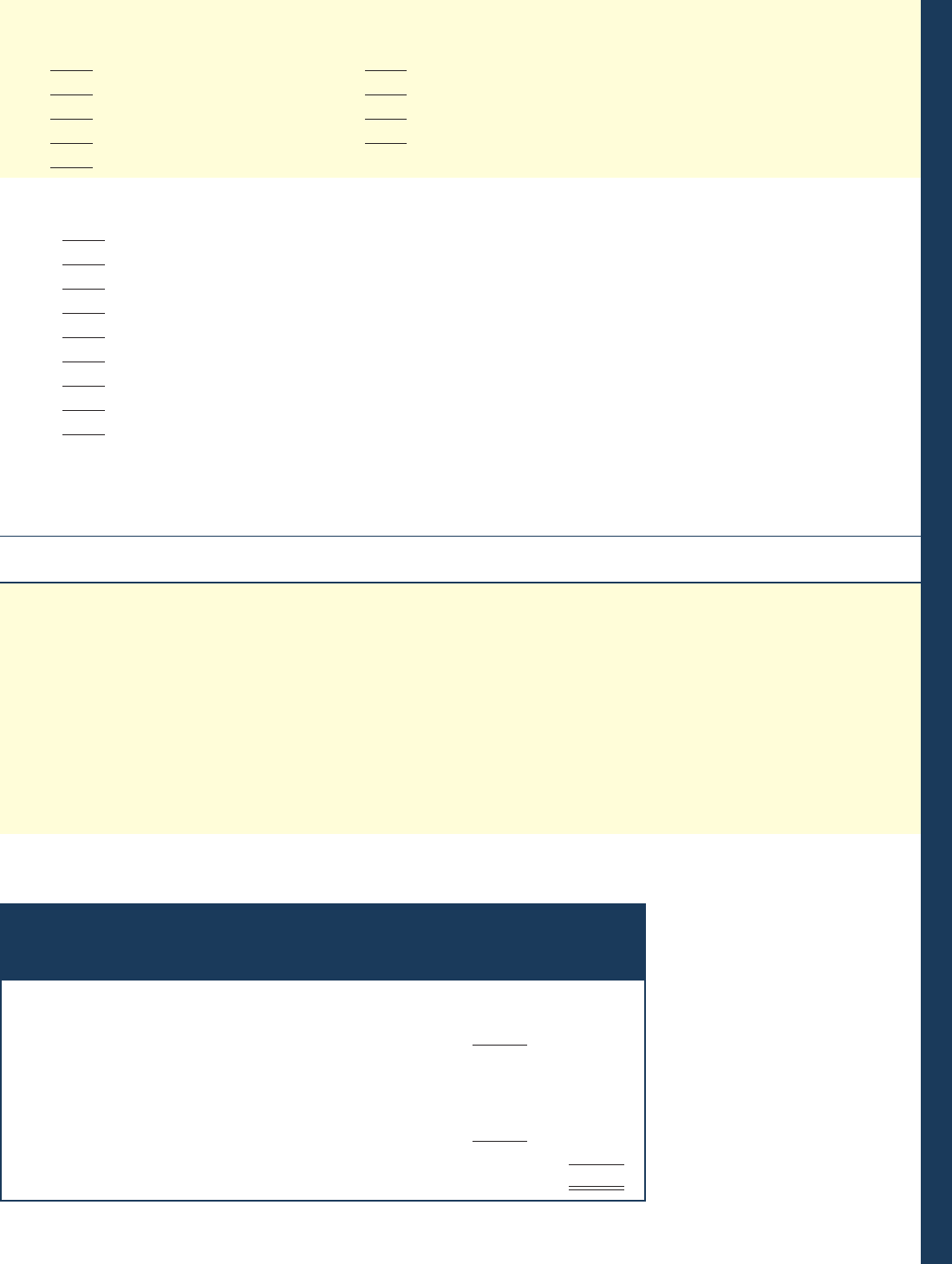
Practice Exercises 1-23
4. (LO 3) Identify whether the following items would appear on the balance sheet (BS) or income
statement (IS) of a corporation.
a.
Income taxes payable.
b.
Cost of goods sold.
c.
Supplies.
d.
Notes payable.
e.
Salaries and wages expense.
Determine where items appear on
nancial statements.
Solution
4. a. BS Income taxes payable.
b. IS Cost of goods sold.
c. BS Supplies.
d. BS Notes payable.
e. IS Salaries and wages expense.
f. IS Service revenue.
g. IS Depreciation expense.
h. BS Prepaid insurance.
i. BS Interest payable.
Practice Exercises
1. (LO 3) The following items and amounts were taken from Ricardo Inc.’s 2022 income statement
and balance sheet.
Cash $ 84,700 Inventory $ 64,618
Retained earnings 123,192 Accounts receivable 88,419
Cost of goods sold 483,854 Sales revenue 693,485
Salaries and wages expense 125,000 Income taxes payable 6,499
Prepaid insurance 7,818 Accounts payable 49,384
Interest expense 994 Service revenue 8,998
Instructions
Prepare an income statement for Ricardo Inc. for the year ended December 31, 2022.
Prepare an income statement.
Solution
1.
Ricardo Inc.
Income Statement
For the Year Ended December 31, 2022
Revenues
Sales revenue $693,485
Service revenue 8,998
Total revenues $702,483
Expenses
Cost of goods sold 483,854
Salaries and wages expense 125,000
Interest expense 994
Total expenses 609,848
Net income $ 92,635
f.
Service revenue.
g.
Depreciation expense.
h.
Prepaid insurance.
i.
Interest payable.
c01IntroductionToFinancialStatements.indd Page 1-23 02/11/18 10:08 AM F-0590 c01IntroductionToFinancialStatements.indd Page 1-23 02/11/18 10:08 AM F-0590 /208/WB02470/XXXXXXXXXXXX/ch01/text_s/208/WB02470/XXXXXXXXXXXX/ch01/text_s

1-24 CHAPTER 1 Introduction to Financial Statements
2. (LO 3) Cozy Bear is a private camping ground near the Mountain Home Recreation Area. It has
compiled the following nancial information as of December 31, 2022.
Service revenue (from camping fees) $148,000 Dividends $ 9,000
Sales revenue (from general store) 35,000 Bonds payable 50,000
Accounts payable 16,000 Expenses during 2022 135,000
Cash 18,500 Supplies 12,500
Equipment 129,000 Common stock 40,000
Retained earnings (1/1/2022) 15,000
Instructions
a. Determine net income from Cozy Bear for 2022.
b. Prepare a retained earnings statement and a balance sheet for Cozy Bear as of December 31,
2022.
Compute net income and prepare a
balance sheet.
Solution
2. a. Service revenue $148,000
Sales revenue 35,000
Total revenue 183,000
Expenses 135,000
Net income $ 48,000
b.
Cozy Bear
Retained Earnings Statement
For the Year Ended December 31, 2022
Retained earnings, January 1 $15,000
Add: Net income 48,000
63,000
Less: Dividends
9,000
Retained earnings, December 31
$54,000
Cozy Bear
Balance Sheet
December 31, 2022
Assets
Cash $ 18,500
Supplies 12,500
Equipment 129,000
Total assets
$160,000
Liabilities and Stockholders’ Equity
Liabilities
Bonds payable $50,000
Accounts payable 16,000
Total liabilities $ 66,000
Stockholders’ equity
Common stock 40,000
Retained earnings 54,000
Total stockholders’ equity 94,000
Total liabilities and stockholders’ equity
$160,000
c01IntroductionToFinancialStatements.indd Page 1-24 02/11/18 10:08 AM F-0590 c01IntroductionToFinancialStatements.indd Page 1-24 02/11/18 10:08 AM F-0590 /208/WB02470/XXXXXXXXXXXX/ch01/text_s/208/WB02470/XXXXXXXXXXXX/ch01/text_s
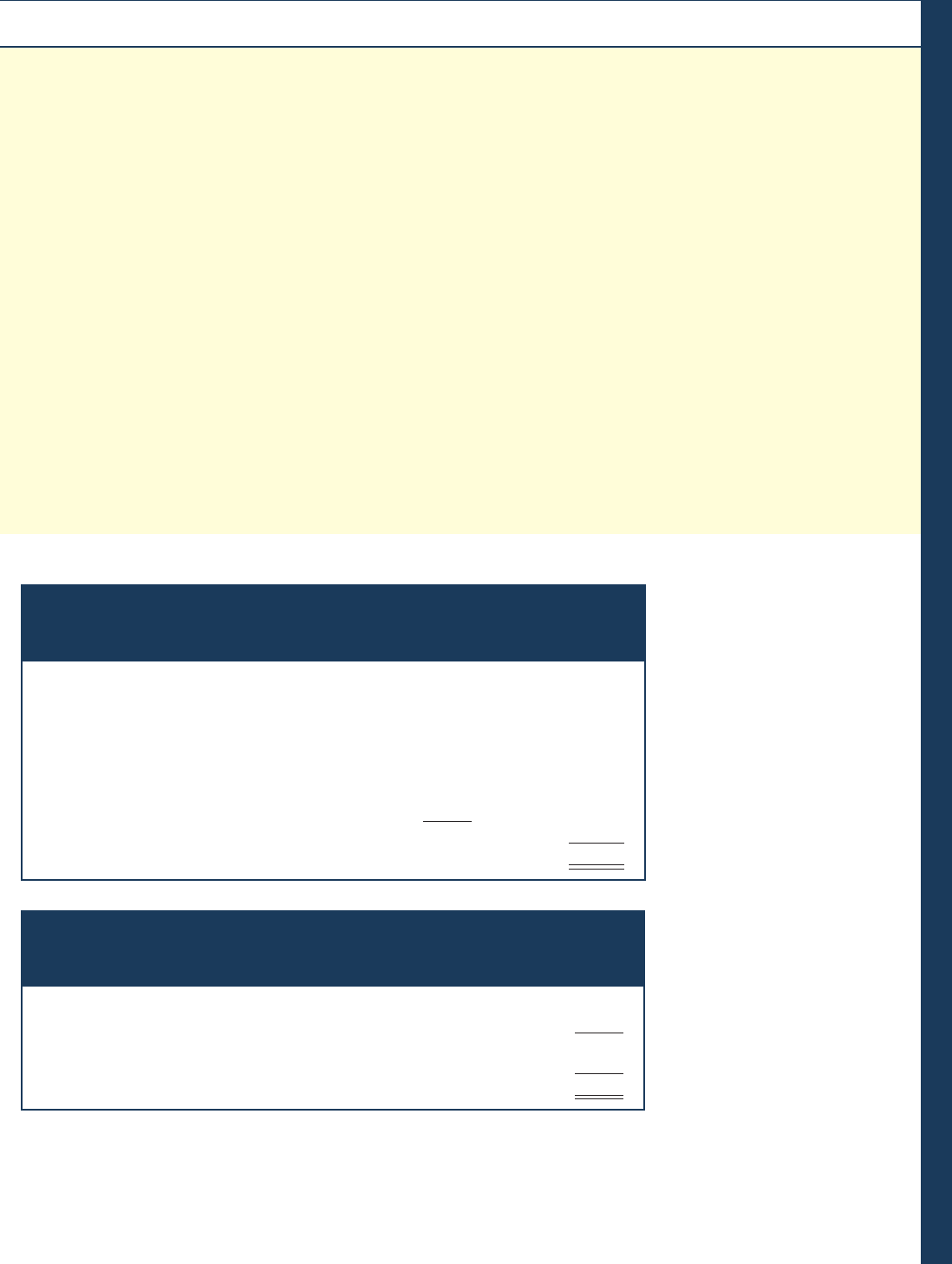
Practice Problem 1-25
Solution
Ice Camp
Income Statement
For the Year Ended December 31, 2022
Revenues
Service revenue $100,000
Expenses
Salaries and wages expense $20,000
Insurance expense 10,000
Supplies expense 9,000
Rent expense 8,000
Interest expense 800
Total expenses 47,800
Net income
$ 52,200
Ice Camp
Retained Earnings Statement
For the Year Ended December 31, 2022
Retained earnings, January 1, 2022 $ 0
Add: Net income 52,200
52,200
Less: Dividends 5,000
Retained earnings, December 31, 2022
$47,200
Practice Problem
(LO 3) Je Andringa, a former college hockey player, quit his job and started Ice Camp, a hockey
camp for kids ages 8 to 18. Eventually, he would like to open hockey camps nationwide. Je has asked
you to help him prepare nancial statements at the end of his rst year of operations. He relates the
following facts about his business activities.
In order to get the business o the ground, Je decided to incorporate. He sold shares of com-
mon stock to a few close friends, as well as bought some of the shares himself. He initially raised
$25,000 through the sale of these shares. In addition, the company took out a $10,000 loan at a
local bank.
Ice Camp purchased, for $12,000 cash, a bus for transporting kids. The company also bought hockey
goals and other miscellaneous equipment with $1,500 cash. The company earned camp tuition during
the year of $100,000 but had collected only $80,000 of this amount. Thus, at the end of the year, its
customers still owed $20,000. The company rents time at a local rink for $50 per hour. Total rink rental
costs during the year were $8,000, insurance was $10,000, salary expense was $20,000, and supplies
used totaled $9,000, all of which were paid in cash. The company incurred $800 in interest expense on
the bank loan, which it still owed at the end of the year.
The company paid dividends during the year of $5,000 cash. The balance in the corporate bank ac-
count at December 31, 2022, was $49,500.
Instructions
Using the format of the Sierra Corporation statements in this chapter, prepare an income statement,
retained earnings statement, balance sheet, and statement of cash ows. (Hint: Prepare the state-
ments in the order stated to take advantage of the ow of information from one statement to the next,
as shown in Illustration 1.9.)
Prepare nancial statements.
c01IntroductionToFinancialStatements.indd Page 1-25 02/11/18 10:08 AM F-0590 c01IntroductionToFinancialStatements.indd Page 1-25 02/11/18 10:08 AM F-0590 /208/WB02470/XXXXXXXXXXXX/ch01/text_s/208/WB02470/XXXXXXXXXXXX/ch01/text_s

1-26 CHAPTER 1 Introduction to Financial Statements
Ice Camp
Balance Sheet
December 31, 2022
Assets
Cash $49,500
Accounts receivable 20,000
Equipment ($12,000 + $1,500) 13,500
Total assets
$83,000
Liabilities and Stockholders’ Equity
Liabilities
Notes payable $10,000
Interest payable 800
Total liabilities $10,800
Stockholders’ equity
Common stock 25,000
Retained earnings 47,200
Total stockholders’ equity 72,200
Total liabilities and stockholders’ equity
$83,000
Ice Camp
Statement of Cash Flows
For the Year Ended December 31, 2022
Cash ows from operating activities
Cash receipts from operating activities $80,000
Cash payments for operating activities (47,000)
Net cash provided by operating activities $33,000
Cash ows from investing activities
Purchase of equipment (13,500)
Net cash used by investing activities (13,500)
Cash ows from nancing activities
Issuance of common stock 25,000
Issuance of notes payable 10,000
Dividends paid (5,000)
Net cash provided by nancing activities 30,000
Net increase in cash 49,500
Cash at beginning of period 0
Cash at end of period
$49,500
Brief Exercises, DO IT! Exercises, Exercises, Problems, and many additional resources are
available for practice in WileyPLUS.
Questions
4. “Accounting is ingrained in our society and is vital to our eco-
nomic system.” Do you agree? Explain.
5. Who are the internal users of accounting data? How does account-
ing provide relevant data to the internal users?
6. Who are the external users of accounting data? Give examples.
1. What are the three basic forms of business organizations?
2. What are the advantages to a business of being formed as a corpo-
ration? What are the disadvantages?
3. What are the advantages to a business of being formed as a part-
nership or sole proprietorship? What are the disadvantages?
c01IntroductionToFinancialStatements.indd Page 1-26 02/11/18 10:08 AM F-0590 c01IntroductionToFinancialStatements.indd Page 1-26 02/11/18 10:08 AM F-0590 /208/WB02470/XXXXXXXXXXXX/ch01/text_s/208/WB02470/XXXXXXXXXXXX/ch01/text_s

Brief Exercises 1-27
7. What are the three main types of business activity? Give examples
of each activity.
8. Listed here are some items found in the nancial statements of
Finzelberg. Indicate in which nancial statement(s) each item would
appear.
a. Service revenue.
b. Equipment.
c. Advertising expense.
d. Accounts receivable.
e. Common stock.
f. Interest payable.
9. Why would a bank want to monitor the dividend payment prac-
tices of the corporations to which it lends money?
10. “A company’s net income appears directly on the income state-
ment and the retained earnings statement, and it is included indi-
rectly in the company’s balance sheet.” Do you agree? Explain.
11. What is the primary purpose of the statement of cash ows?
12. What are the three main categories of the statement of cash
ows? Why do you think these categories were chosen?
13. What is retained earnings? What items increase the balance
in retained earnings? What items decrease the balance in retained
earnings?
14. What is the basic accounting equation?
15. a. De ne the terms assets, liabilities, and stockholders’ equity.
b. What items a ect stockholders’ equity?
16. Which of these items are liabilities of White Glove Cleaning
Service?
a. Cash. f. Equipment.
b. Accounts payable. g. Salaries and wages
c. Dividends.
payable.
d. Accounts receivable. h. Service revenue.
e. Supplies. i. Rent expense.
17. How are each of the following nancial statements interrelated?
(a) Retained earnings statement and income statement. (b) Retained
earnings statement and balance sheet. (c) Balance sheet and state-
ment of cash ows.
18. What is the purpose of the management discussion and analysis
section (MD&A)?
19. Why is it important for nancial statements to receive an unqual-
i ed auditor’s opinion?
20. What types of information are presented in the notes to the nan-
cial statements?
21. The accounting equation is Assets = Liabilities + Stockhold-
ers’ Equity. Appendix A reproduces
Apple’s nancial statements.
Replacing words in the equation with dollar amounts, what is Apple’s
accounting equation at September 30, 2017?
Brief Exercises
BE1.1 (LO 1), K Match each of the following forms of business organization with a set of characteristics:
sole proprietorship (SP), partnership (P), corporation (C).
a. _____ Shared control, tax advantages, increased skills and resources.
b. _____ Simple to set up and maintains control with owner.
c. _____ Easier to transfer ownership and raise funds, no personal liability.
BE1.2 (LO 1), K Match each of the following types of evaluation with one of the listed users of
accounting information.
1. Trying to determine whether the company complied with tax laws.
2. Trying to determine whether the company can pay its obligations.
3. Trying to determine whether an advertising proposal will be cost-e ective.
4. Trying to determine whether the company’s net income will result in a stock price increase.
5. Trying to determine whether the company should employ debt or equity nancing.
a. _____ Investors in common stock. d. _____ Chief Financial O cer.
b. _____ Marketing managers. e. _____ Internal Revenue Service.
c. _____ Creditors.
BE1.3 (LO 2), K Indicate to which business activity, operating activity (O), investing activity (I), or nanc-
ing activity (F), each item relates.
a. _____ Cash received from customers.
b. _____ Cash paid to stockholders (dividends).
c. _____ Cash received from issuing new common stock.
d. _____ Cash paid to suppliers.
e. _____ Cash paid to purchase a new o ce building.
BE1.4 (LO 3), C Presented below are a number of transactions. Determine whether each transaction af-
fects common stock (C), dividends (D), revenues (R), expenses (E), or does not a ect stockholders’ equity
(NSE). Provide titles for the revenues and expenses.
Describe forms of business
organization.
Identify users of accounting
information.
Classify items by activity.
Determine e ect of transactions on
stockholders’ equity.
c01IntroductionToFinancialStatements.indd Page 1-27 02/11/18 10:08 AM F-0590 c01IntroductionToFinancialStatements.indd Page 1-27 02/11/18 10:08 AM F-0590 /208/WB02470/XXXXXXXXXXXX/ch01/text_s/208/WB02470/XXXXXXXXXXXX/ch01/text_s

1-28 CHAPTER 1 Introduction to Financial Statements
a. Costs incurred for advertising.
b. Cash received for services performed.
c. Costs incurred for insurance.
d. Amounts paid to employees.
e. Cash distributed to stockholders.
f. Cash received in exchange for allowing the use of the company’s building.
g. Costs incurred for utilities used.
h. Cash purchase of equipment.
i. Cash received from investors.
BE1.5 (LO 3), AP In alphabetical order below are balance sheet items for Karol Company at
December 31, 2022. Prepare a balance sheet following the format of Illustration 1.7.
Accounts payable $65,000
Accounts receivable 71,000
Cash 22,000
Common stock 18,000
Retained earnings 10,000
BE1.6 (LO 3), K Eskimo Pie Corporation markets a broad range of frozen treats, including its
famous Eskimo Pie ice cream bars. The following items were taken from a recent income statement and
balance sheet. In each case, identify whether the item would appear on the balance sheet (BS) or income
statement (IS).
a. _____ Income tax expense. f. _____ Sales revenue.
b. _____ Inventory. g. _____ Cost of goods sold.
c. _____ Accounts payable. h. _____ Common stock.
d. _____ Retained earnings. i. _____ Accounts receivable.
e. _____ Equipment. j. _____ Interest expense.
BE1.7 (LO 3), K Indicate which statement you would examine to nd each of the following items: in-
come statement (IS), balance sheet (BS), retained earnings statement (RES), or statement of cash ows
(SCF).
a. Revenue during the period.
b. Supplies on hand at the end of the year.
c. Cash received from issuing new bonds during the period.
d. Total debts outstanding at the end of the period.
BE1.8 (LO 3), AP Use the basic accounting equation to answer these questions.
a. The liabilities of Lantz Company are $90,000 and the stockholders’ equity is $230,000. What is the
amount of Lantz’s total assets?
b. The total assets of Salley Company are $170,000 and its stockholders’ equity is $80,000. What is the
amount of its total liabilities?
c. The total assets of Brandon Co. are $800,000 and its liabilities are equal to one-fourth of its total
assets. What is the amount of Brandon’s stockholders’ equity?
BE1.9 (LO 3), AP At the beginning of the year, Morales Company had total assets of $800,000 and total
liabilities of $500,000. (Treat each item independently.)
a. If total assets increased $150,000 during the year and total liabilities decreased $80,000, what is the
amount of stockholders’ equity at the end of the year?
b. During the year, total liabilities increased $100,000 and stockholders’ equity decreased $70,000.
What is the amount of total assets at the end of the year?
c. If total assets decreased $80,000 and stockholders’ equity increased $110,000 during the year, what
is the amount of total liabilities at the end of the year?
BE1.10 (LO 3), K Indicate whether each of these items is an asset (A), a liability (L), or part of stockhold-
ers’ equity (SE).
a. Accounts receivable. d. Supplies.
b. Salaries and wages payable. e. Common stock.
c. Equipment. f. Notes payable.
Prepare a balance sheet.
Determine where items appear
on nancial statements.
Determine proper nancial
statement.
Use basic accounting equation.
Use basic accounting equation.
Identify assets, liabilities, and
stockholders’ equity.
c01IntroductionToFinancialStatements.indd Page 1-28 02/11/18 10:08 AM F-0590 c01IntroductionToFinancialStatements.indd Page 1-28 02/11/18 10:08 AM F-0590 /208/WB02470/XXXXXXXXXXXX/ch01/text_s/208/WB02470/XXXXXXXXXXXX/ch01/text_s

Exercises 1-29
BE1.11 (LO 3), K Which is not a required part of an annual report of a publicly traded company?
a. Statement of cash ows. c. Management discussion and analysis.
b. Notes to the nancial statements. d. All of these are required.
Determine required parts of
annual report.
DO IT! Exercises
DO IT! 1.1 (LO 1), C Identify each of the following organizational characteristics with the business
organizational form or forms with which it is associated.
a. Easier to transfer ownership. d. Tax advantages.
b. Easier to raise funds. e. No personal legal liability.
c. More owner control.
DO IT! 1.2 (LO 2), K Classify each item as an asset, liability, common stock, revenue, or expense.
a. Issuance of ownership shares. d. Bonds payable.
b. Land purchased. e. Amount earned from selling a product.
c. Amounts owed to suppliers. f. Cost of advertising.
DO IT! 1.3a (LO 3), AP Gray Corporation began operations on January 1, 2022. The following informa-
tion is available for Gray on December 31, 2022.
Accounts payable $ 5,000 Notes payable $ 7,000
Accounts receivable 2,000 Rent expense 10,000
Advertising expense 4,000 Retained earnings ?
Cash 3,100 Service revenue 25,000
Common stock 15,000 Supplies 1,900
Dividends 2,500 Supplies expense 1,700
Equipment 26,800
Prepare an income statement, a retained earnings statement, and a balance sheet for Gray Corporation.
DO IT! 1.3b (LO 3), K Indicate whether each of the following items is most closely associated with the
management discussion and analysis (MD&A), the notes to the nancial statements, or the auditor’s
report.
a. Description of ability to pay near-term obligations.
b. Unquali ed opinion.
c. Details concerning liabilities, too voluminous to be included in the statements.
d. Description of favorable and unfavorable trends.
e. Certi ed public accountant (CPA).
f. Descriptions of signi cant accounting policies.
Identify bene ts of business
organization forms.
Classify nancial statement
elements.
Prepare nancial statements.
Identify components of annual reports.
Exercises
E1.1 (LO 1, 2, 3), K Here is a list of words or phrases discussed in this chapter:
1. Corporation 4. Partnership 7. Accounts payable
2. Creditor 5. Stockholder 8. Auditor’s opinion
3. Accounts receivable 6. Common stock
Instructions
Match each word or phrase with the best description of it.
______ a. An expression about whether nancial statements conform with generally accepted ac-
counting principles.
______ b. A business that raises money by issuing shares of stock.
______ c. The portion of stockholders’ equity that results from receiving cash from investors.
Match items with descriptions.
c01IntroductionToFinancialStatements.indd Page 1-29 02/11/18 10:08 AM F-0590 c01IntroductionToFinancialStatements.indd Page 1-29 02/11/18 10:08 AM F-0590 /208/WB02470/XXXXXXXXXXXX/ch01/text_s/208/WB02470/XXXXXXXXXXXX/ch01/text_s

1-30 CHAPTER 1 Introduction to Financial Statements
______ d. Obligations to suppliers of goods.
______ e. Amounts due from customers.
______ f. A party to whom a business owes money.
______ g. A party that invests in common stock.
______ h. A business that is owned jointly by two or more individuals but does not issue stock.
E1.2 (LO 1, 2, 3), K The following list of terms or phrases are discussed in this chapter.
1. Certi ed public accountant (CPA) 7. Sole proprietorship
2. Management discussion and analysis (MD&A) 8. Basic accounting equation
3. Revenue 9. Expenses
4. Dividends 10. Liabilities
5. Stockholders’ equity 11. Sarbanes-Oxley Act (SOX)
6. Net loss
Instructions
Match each term or phrase to its description below.
a. ______ Assets = Liabilities + Stockholders’ Equity.
b. ______ An individual who has met certain criteria and is thus allowed to perform audits of corporations.
c. ______ Payments of cash from a corporation to its stockholders.
d. ______ The cost of assets consumed or services used in the process of generating revenues.
e. ______ Amounts owed to creditors in the form of debts and other obligations.
f. ______ A section of the annual report that presents management’s views on the company’s ability to pay
near-term obligations, its ability to fund operations and expansion, and its results of operations.
g. ______ The amount by which expenses exceed revenues.
h. ______ The increase in assets or decrease in liabilities resulting from the sale of goods or the perfor-
mance of services in the normal course of business.
i. ______ Regulations passed by Congress to reduce unethical corporate behavior.
j. ______ A business owned by one person.
k. ______ The owners’ claim to assets.
E1.3 (LO 2), C All businesses are involved in three types of activities— nancing, investing, and
operating. Listed below are the names and descriptions of companies in several di erent industries.
Abitibi Consolidated Inc.—manufacturer and marketer of newsprint
Cal State–Northridge Stdt Union—university student union
Oracle Corporation—computer software developer and retailer
Sportsco Investments—owner of the Vancouver Canucks hockey club
Grant Thornton LLP—professional accounting and business advisory firm
Southwest Airlines—low-cost airline
Instructions
a. For each of the above companies, provide examples of (1) a nancing activity, (2) an investing activ-
ity, and (3) an operating activity that the company likely engages in.
b. Which of the activities that you identi ed in (a) are common to most businesses? Which activities
are not?
E1.4 (LO 2, 3), C The Bonita Vista Golf & Country Club details the following accounts in its nancial
statements.
Accounts payable _____
Accounts receivable _____
Equipment _____
Sales revenue _____
Service revenue _____
Inventory _____
Mortgage payable _____
Supplies expense _____
Rent expense _____
Salaries and wages expense _____
Match items with descriptions.
Identify business activities.
Classify accounts.
c01IntroductionToFinancialStatements.indd Page 1-30 02/11/18 10:08 AM F-0590 c01IntroductionToFinancialStatements.indd Page 1-30 02/11/18 10:08 AM F-0590 /208/WB02470/XXXXXXXXXXXX/ch01/text_s/208/WB02470/XXXXXXXXXXXX/ch01/text_s

Exercises 1-31
Instructions
Classify each of the accounts as an asset (A), liability (L), stockholders’ equity (SE), revenue (R), or ex-
pense (E) item.
E1.5 (LO 3), AP This information relates to Benser Co. for the year 2022.
Retained earnings, January 1, 2022 $67,000
Advertising expense 1,800
Dividends 6,000
Rent expense 10,400
Service revenue 58,000
Utilities expense 2,400
Salaries and wages expense 30,000
Instructions
Prepare an income statement and a retained earnings statement for the year ending December 31,
2022.
E1.6 (LO 3), AP Suppose the following information was taken from the 2022 nancial statements of
pharmaceutical giant
Merck and Co. (All dollar amounts are in millions.)
Retained earnings, January 1, 2022 $43,698.8
Cost of goods sold 9,018.9
Selling and administrative expenses 8,543.2
Dividends 3,597.7
Sales revenue 38,576.0
Research and development expense 5,845.0
Income tax expense 2,267.6
Instructions
a. After analyzing the data, prepare an income statement and a retained earnings statement for the
year ending December 31, 2022.
b. Suppose that Merck decided to reduce its research and development expense by 50%. What would
be the short-term implications? What would be the long-term implications? How do you think the
stock market would react?
E1.7 (LO 3), AP Presented here is information for Zheng Inc. for 2022.
Retained earnings, January 1 $130,000
Service revenue 400,000
Total expenses 175,000
Dividends 65,000
Instructions
Prepare the 2022 retained earnings statement for Zheng Inc.
E1.8 (LO 3), AP The following information is available for Randall Inc.
Accounts receivable $ 2,400 Cash $ 6,250
Accounts payable 3,700 Supplies 3,760
Interest payable 580 Unearned service revenue 850
Salaries and wages expense 4,500 Service revenue 40,920
Notes payable 31,500 Salaries and wages payable 745
Common stock 50,700 Depreciation expense 670
Inventory 2,840 Equipment (net) 108,200
Instructions
Using the information above, prepare a balance sheet as of December 31, 2022. (Hint: Solve for the
missing retained earnings amount.)
E1.9 (LO 3), AP Consider each of the following independent situations.
a. The retained earnings statement of Lee Corporation shows dividends of $68,000, while net income
for the year was $75,000.
Prepare income statement and
retained earnings statement.
Prepare income statement and
retained earnings statement.
Prepare a retained earnings
statement.
Prepare a balance sheet.
Interpret nancial facts.
c01IntroductionToFinancialStatements.indd Page 1-31 02/11/18 10:08 AM F-0590 c01IntroductionToFinancialStatements.indd Page 1-31 02/11/18 10:08 AM F-0590 /208/WB02470/XXXXXXXXXXXX/ch01/text_s/208/WB02470/XXXXXXXXXXXX/ch01/text_s

1-32 CHAPTER 1 Introduction to Financial Statements
b. The statement of cash ows for Steele Corporation shows that cash provided by operating activities
was $10,000, cash used in investing activities was $110,000, and cash provided by nancing activities
was $130,000.
Instructions
For each company, provide a brief discussion interpreting these nancial facts. For example, you might
discuss the company’s nancial health or its apparent growth philosophy.
E1.10 (LO 3), C The following items and amounts were taken from Lonyear Inc.’s 2022 income state-
ment and balance sheet.
______ Cash $ 84,700 ______ Accounts receivable $ 88,419
______ Retained earnings 123,192 ______ Sales revenue 584,951
______ Cost of goods sold 438,458 ______ Notes payable 6,499
______ Salaries and wages expense 115,131 ______ Accounts payable 49,384
______ Prepaid insurance 7,818 ______ Service revenue 4,806
______ Inventory 64,618 ______ Interest expense 1,882
Instructions
a. In each, case, identify on the blank line whether the item is an asset (A), liability (L), stockholders’
equity (SE), revenue (R), or expense (E) item.
b. Prepare an income statement for Lonyear Inc. for the year ended December 31, 2022.
E1.11 (LO 3), AP The following items and amounts were taken from Familia Inc.’s 2022 income state-
ment and balance sheet, the end of its rst year of operations.
______ Interest expense $ 2,200 ______ Equipment, net $54,700
______ Interest payable 700 ______ Depreciation expense 3,200
______ Notes payable 11,800 ______ Supplies 4,100
______ Sales revenue 44,300 ______ Common stock 26,800
______ Cash 2,900 ______ Supplies expense 900
______ Salaries and wages expense 15,600
Instructions
a. In each case, identify on the blank line whether the item is an asset (A), liability (L), stockholders’
equity (SE), revenue (R), or expense (E) item.
b. Prepare an income statement for Familia Inc. for December 31, 2022.
E1.12 (LO 3), AN Here are incomplete nancial statements for Donavan, Inc.
Identify nancial statement compo-
nents and prepare income statement.
Identify nancial statement compo-
nents and prepare income statement.
Calculate missing amounts.
Instructions
Calculate the missing amounts.
Donavan, Inc.
Balance Sheet
Income Statement
Revenues $85,000
Cost of goods sold (c)
Salaries and wages expense 10,000
Net income $ (d)
Retained Earnings Statement
Beginning retained earnings $12,000
Add: Net income (e)
Less: Dividends 5,000
Ending retained earnings $27,000
Assets
Cash $ 7,000
Inventory 10,000
Buildings (net) 45,000
Total assets $62,000
Liabilities and Stockholders’ Equity
Liabilities
Accounts payable $ 5,000
Stockholders’ equity
Common stock (a)
Retained earnings (b)
Total liabilities and
stockholders’ equity $62,000
c01IntroductionToFinancialStatements.indd Page 1-32 02/11/18 10:08 AM F-0590 c01IntroductionToFinancialStatements.indd Page 1-32 02/11/18 10:08 AM F-0590 /208/WB02470/XXXXXXXXXXXX/ch01/text_s/208/WB02470/XXXXXXXXXXXX/ch01/text_s

Exercises 1-33
E1.13 (LO 3), AN Here are incomplete nancial statements for Oway Corporation.
Calculate missing amounts.
Instructions
Calculate the missing amounts.
E1.14 (LO 3), AP Otay Lakes Park is a private camping ground near the Mount Miguel Recreation Area.
It has compiled the following nancial information as of December 31, 2022.
Service revenue (from camping fees) $132,000 Dividends $ 9,000
Sales revenue (from general store) 25,000 Notes payable 50,000
Accounts payable 11,000 Expenses during 2022 126,000
Cash 8,500 Supplies 5,500
Equipment 114,000 Common stock 40,000
Retained earnings (1/1/2022) 5,000
Instructions
a. Determine Otay Lakes Park’s net income for 2022.
b. Prepare a retained earnings statement and a balance sheet for Otay Lakes Park as of December 31, 2022.
c. Upon seeing this income statement, Walt Jones, the campground manager, immediately concluded,
“The general store is more trouble than it is worth—let’s get rid of it.” The marketing director isn’t
so sure this is a good idea. What do you think?
E1.15 (LO 3), AP Kellogg Company is the world’s leading producer of ready-to-eat cereal and a
leading producer of grain-based convenience foods such as frozen wa es and cereal bars. Suppose
the following items were taken from its 2022 income statement and balance sheet. (All dollars are in
millions.)
____ Retained earnings $5,481 ____ Bonds payable $ 4,835
____ Cost of goods sold 7,184 ____ Inventory 910
____ Selling and ____ Sales revenue 12,575
administrative expenses 3,390 ____ Accounts payable 1,077
____ Cash 334 ____ Common stock 105
____ Notes payable 44 ____ Income tax expense 498
____ Interest expense 295
Instructions
a. In each case, identify whether the item is an asset (A), liability (L), stockholders’ equity (SE), reve-
nue (R), or expense (E).
b. Prepare an income statement for Kellogg Company for the year ended December 31, 2022.
Compute net income and prepare
a balance sheet.
Identify nancial statement
components and prepare an income
statement.
Oway Corporation.
Balance Sheet
Liabilities and Stockholders’ Equity
Liabilities
Notes payable $22,000
Stockholders’ equity
Common stock 38,000
Retained earnings (c)
Total liabilities and
stockholders’ equity $ (d)
Assets
Cash $ 29,000
Supplies (a)
Equipment (net) 65,000
Total assets $ (b)
Income Statement
Revenues $53,000
Depreciation expense (e)
Salaries and wages expense 10,000
Interest expense 1,000
Net income $25,000
Retained Earnings Statement
Beginning retained earnings $ (f)
Add: Net income (g)
Less: Dividends 6,000
Ending retained earnings $37,000
c01IntroductionToFinancialStatements.indd Page 1-33 02/11/18 10:08 AM F-0590 c01IntroductionToFinancialStatements.indd Page 1-33 02/11/18 10:08 AM F-0590 /208/WB02470/XXXXXXXXXXXX/ch01/text_s/208/WB02470/XXXXXXXXXXXX/ch01/text_s

1-34 CHAPTER 1 Introduction to Financial Statements
E1.16 (LO 3), AP This information is for Williams Corporation for the year ended December 31, 2022.
Cash received from lenders $20,000
Cash received from customers 50,000
Cash paid for new equipment 28,000
Cash dividends paid 8,000
Cash paid to suppliers 16,000
Cash balance 1/1/22 12,000
Instructions
a. Prepare the 2022 statement of cash ows for Williams Corporation.
b. Suppose you are one of Williams’ creditors. Referring to the statement of cash ows, evaluate
Williams’ ability to repay its creditors.
E1.17 (LO 3), AP Suppose the following data are derived from the 2022 nancial statements of South-
west Airlines
. (All dollars are in millions.) Southwest has a December 31 year-end.
Cash balance, January 1, 2022 $1,390
Cash paid for repayment of debt 122
Cash received from issuance of common stock 144
Cash received from issuance of long-term debt 500
Cash received from customers 9,823
Cash paid for property and equipment 1,529
Cash paid for dividends 14
Cash paid for repurchase of common stock 1,001
Cash paid for goods and services 6,978
Instructions
a. After analyzing the data, prepare a statement of cash ows for Southwest Airlines for the year ended
December 31, 2022.
b. Discuss whether the company’s net cash provided by operating activities was su cient to nance its
investing activities. If it was not, how did the company nance its investing activities?
E1.18 (LO 3), AP Wayne Holtz is the bookkeeper for Beeson Company. Wayne has been trying to get
the balance sheet of Beeson Company to balance. It nally balanced, but now he’s not sure it is correct.
Prepare a statement of cash ows.
Prepare a statement of cash ows.
Correct an incorrectly prepared balance
sheet.
Instructions
Prepare a correct balance sheet.
E1.19 (LO 3), AP Suppose the following items were taken from the balance sheet of Nike, Inc. (All
dollars are in millions.)
1. Cash $2,291.1 7. Inventory $2,357.0
2. Accounts receivable 2,883.9 8. Income taxes payable 86.3
3. Common stock 2,874.2 9. Equipment 1,957.7
4. Notes payable 342.9 10. Retained earnings 5,818.9
5. Buildings 3,759.9 11. Accounts payable 2,815.8
6. Mortgage payable 1,311.5
Instructions
Perform each of the following.
a. Classify each of these items as an asset, liability, or stockholders’ equity, and determine the total
dollar amount for each classi cation.
Classify items as assets, liabilities,
and stockholders’ equity and prepare
accounting equation.
Excel
Beeson Company
Balance Sheet
December 31, 2022
Assets
Cash $18,000
Supplies 9,500
Equipment 40,000
Dividends 8,000
Total assets $75,500
Liabilities and Stockholders’ Equity
Accounts payable $16,000
Accounts receivable (12,000)
Common stock 40,000
Retained earnings 31,500
Total liabilities and
stockholders’ equity $75,500
c01IntroductionToFinancialStatements.indd Page 1-34 02/11/18 10:08 AM F-0590 c01IntroductionToFinancialStatements.indd Page 1-34 02/11/18 10:08 AM F-0590 /208/WB02470/XXXXXXXXXXXX/ch01/text_s/208/WB02470/XXXXXXXXXXXX/ch01/text_s

Problems: Set A 1-35
b. Determine Nike’s accounting equation by calculating the value of total assets, total liabilities, and
total stockholders’ equity.
c. To what extent does Nike rely on debt versus equity nancing?
E1.20 (LO 3), AN The summaries of data from the balance sheet, income statement, and retained earn-
ings statement for two corporations, Walco Corporation and Gunther Enterprises, are presented as fol-
lows for 2022.
Walco Corporation Gunther Enterprises
Beginning of year
Total assets $110,000 $150,000
Total liabilities 70,000 (d)
Total stockholders’ equity (a) 70,000
End of year
Total assets (b) 180,000
Total liabilities 120,000 55,000
Total stockholders’ equity 60,000 (e)
Changes during year in retained
earnings
Dividends (c) 5,000
Total revenues 215,000 (f)
Total expenses 165,000 80,000
Instructions
Determine the missing amounts. Assume all changes in stockholders’ equity are due to changes in
retained earnings.
E1.21 (LO 3), K The annual report provides nancial information in a variety of formats, including the
following.
Management discussion and analysis (MD&A)
Financial statements
Notes to the financial statements
Auditor’s opinion
Instructions
For each of the following, state in what area of the annual report the item would be presented. If the item
would probably not be found in an annual report, state “Not disclosed.”
a. The total cumulative amount received from stockholders in exchange for common stock.
b. An independent assessment concerning whether the nancial statements present a fair depiction of
the company’s results and nancial position.
c. The interest rate that the company is being charged on all outstanding debts.
d. Total revenue from operating activities.
e. Management’s assessment of the company’s results.
f. The names and positions of all employees hired in the last year.
Use nancial statement relationships to
determine missing amounts.
Classify various items in an annual
report.
Problems: Set A
P1.1A (LO 1), C
Writing
Presented below are ve independent situations.
a. Three physics professors at MIT have formed a business to improve the speed of information transfer
over the Internet for stock exchange transactions. Each has contributed an equal amount of cash and
knowledge to the venture. Although their approach looks promising, they are concerned about the
legal liabilities that their business might confront.
b. Bob Colt, a college student looking for summer employment, opened a bait shop in a small shed at a
local marina.
c. Alma Ortiz and Jaime Falco each owned separate shoe manufacturing businesses. They have decided
to combine their businesses. They expect that within the coming year they will need signi cant
funds to expand their operations.
Determine forms of business
organization.
c01IntroductionToFinancialStatements.indd Page 1-35 02/11/18 10:08 AM F-0590 c01IntroductionToFinancialStatements.indd Page 1-35 02/11/18 10:08 AM F-0590 /208/WB02470/XXXXXXXXXXXX/ch01/text_s/208/WB02470/XXXXXXXXXXXX/ch01/text_s

1-36 CHAPTER 1 Introduction to Financial Statements
d. Alice, Donna, and Sam recently graduated with marketing degrees. They have been friends since
childhood. They have decided to start a consulting business focused on marketing sporting goods
over the Internet.
e. Don Rolls has developed a low-cost GPS device that can be implanted into pets so that they can be
easily located when lost. He would like to build a small manufacturing facility to make the devices
and then sell them to veterinarians across the country. Don has no savings or personal assets. He
wants to maintain control over the business.
Instructions
In each case, explain what form of organization the business is likely to take—sole proprietorship, part-
nership, or corporation. Give reasons for your choice.
P1.2A (LO 3), C
Writing
Financial decisions often place heavier emphasis on one type of nancial
statement over the others. Consider each of the following hypothetical situations independently.
a.
The North Face is considering extending credit to a new customer. The terms of the credit would
require the customer to pay within 30 days of receipt of goods.
b. An investor is considering purchasing common stock of
Amazon.com. The investor plans to hold
the investment for at least 5 years.
c.
JPMorgan Chase Bank is considering extending a loan to a small company. The company would
be required to make interest payments at the end of each year for 5 years, and to repay the loan at
the end of the fth year.
d. The president of
Campbell Soup is trying to determine whether the company is generating enough
cash to increase the amount of dividends paid to investors in this and future years, and still have
enough cash to buy equipment as it is needed.
Instructions
In each situation, state whether the decision-maker would be most likely to place primary emphasis on
information provided by the income statement, balance sheet, or statement of cash ows. In each case
provide a brief justi cation for your choice. Choose only one nancial statement in each case.
P1.3A (LO 3), AP On June 1, 2022, Elite Service Co. was started with an initial investment in the com-
pany of $22,100 cash. Here are the assets, liabilities, and common stock of the company at June 30, 2022,
and the revenues and expenses for the month of June, its rst month of operations:
Cash $ 4,600 Notes payable $12,000
Accounts receivable 4,000 Accounts payable 500
Service revenue 7,500 Supplies expense 1,000
Supplies 2,400 Maintenance and repairs expense 600
Advertising expense 400 Utilities expense 300
Equipment 26,000 Salaries and wages expense 1,400
Common stock 22,100
During June, the company issued no additional stock but paid dividends of $1,400.
Instructions
a. Prepare an income statement and a retained earnings statement for the month of June and a balance
sheet at June 30, 2022.
b. Brie y discuss whether the company’s rst month of operations was a success.
c. Discuss the company’s decision to distribute a dividend.
P1.4A (LO 3), AP Reese Inc., a provider of consulting services, was founded on October 1, 2022. At the
end of the rst month of operations, the company decided to prepare an income statement, retained
earnings statement, and balance sheet using the following information.
Accounts payable $ 3,300 Supplies $ 2,460
Interest expense 410 Supplies expense 380
Equipment (net) 48,200 Depreciation expense 270
Salaries and wages expense 2,500 Service revenue 20,920
Bonds payable 21,500 Salaries and wages payable 445
Unearned service revenue 4,065 Common stock 9,100
Accounts receivable 1,300 Interest payable 140
Cash 3,950
Identify users and uses of nancial
statements.
Prepare an income statement, retained
earnings statement, and balance sheet;
discuss results.
Excel
Check figures provide a key
number to let you know you are
on the right track.
a. Net income $ 3,800
Ret. earnings $ 2,400
Tot. assets $37,000
Prepare an income statement, retained
earnings statement, and balance sheet.
c01IntroductionToFinancialStatements.indd Page 1-36 02/11/18 10:15 AM F-0590 c01IntroductionToFinancialStatements.indd Page 1-36 02/11/18 10:15 AM F-0590 /208/WB02470/XXXXXXXXXXXX/ch01/text_s/208/WB02470/XXXXXXXXXXXX/ch01/text_s

Continuing Case 1-37
Instructions
Using the information, prepare an income statement and retained earnings statement for the month of
October 2022 and a balance sheet as of October 31, 2022.
P1.5A (LO 3), AP Presented below is selected nancial information for Rojo Corporation for December 31,
2022.
Inventory $ 25,000 Cash paid to purchase equipment $ 12,000
Cash paid to suppliers 104,000 Equipment 40,000
Buildings 200,000 Service revenue 100,000
Common stock 50,000 Cash received from customers 132,000
Cash dividends paid 7,000 Cash received from issuing
Cash at beginning of period 9,000 common stock 22,000
Instructions
a. Prepare the statement of cash ows for Rojo Corporation.
b. Comment on the adequacy of net cash provided by operating activities to fund the company’s invest-
ing activities and dividend payments.
P1.6A (LO 3), AN
Writing
Micado Corporation was formed on January 1, 2022. At December 31,
2022, Miko Liu, the president and sole stockholder, decided to prepare a balance sheet, which appeared
as follows.
Micado Corporation
Balance Sheet
December 31, 2022
Assets Liabilities and Stockholders’ Equity
Cash $20,000 Accounts payable $30,000
Accounts receivable 50,000 Notes payable 15,000
Inventory 36,000 Boat loan 22,000
Boat 24,000 Stockholders’ equity 63,000
Miko willingly admits that she is not an accountant by training. She is concerned that her balance sheet
might not be correct. She has provided you with the following additional information.
1. The boat actually belongs to Miko, not to Micado Corporation. However, because she thinks she
might take customers out on the boat occasionally, she decided to list it as an asset of the company.
To be consistent, she also listed as a liability of the corporation her personal loan that she took out
at the bank to buy the boat.
2. The inventory was originally purchased for $25,000, but due to a surge in demand Miko now thinks
she could sell it for $36,000. She thought it would be best to record it at $36,000.
3. Included in the accounts receivable balance is $10,000 that Miko loaned to her brother 5 years ago.
Miko included this in the receivables of Micado Corporation so she wouldn’t forget that her brother
owes her money.
Instructions
a. Comment on the proper accounting treatment of the three items above.
b. Provide a corrected balance sheet for Micado Corporation. (Hint: To get the balance sheet to balance,
adjust stockholders’ equity.)
End. retained earnings $17,360
a. Net cash increase $31,000
Comment on proper accounting
treatment and prepare a corrected
balance sheet.
b. Tot. assets $85,000
Determine items included in a
statement of cash ows, prepare the
statement, and comment.
Continuing Case
Cookie Creations
CC1 Natalie Koebel spent much of her childhood learning the art of cookie-making from her grandmother.
They spent many happy hours mastering every type of cookie imaginable and later devised new recipes
that were both healthy and delicious. Now at the start of her second year in college, Natalie is investigating
possibilities for starting her own business as part of the entrepreneurship program in which she is enrolled.
A long-time friend insists that Natalie has to include cookies in her business plan. After a series of
brainstorming sessions, Natalie settles on the idea of operating a cookie-making school. She will start on
The Cookie Creations case starts in Chapter 1 and continues in every chapter.
Complete case details and instructions are available in WileyPLUS.
© leungchopan/
Shutterstock
c01IntroductionToFinancialStatements.indd Page 1-37 02/11/18 10:15 AM F-0590 c01IntroductionToFinancialStatements.indd Page 1-37 02/11/18 10:15 AM F-0590 /208/WB02470/XXXXXXXXXXXX/ch01/text_s/208/WB02470/XXXXXXXXXXXX/ch01/text_s

1-38 CHAPTER 1 Introduction to Financial Statements
a part-time basis and o er her services in people’s homes. Now that she has started thinking about it, the
possibilities seem endless. During the fall, she will concentrate on holiday cookies. She will o er group
sessions (which will probably be more entertainment than education) and individual lessons. Natalie also
decides to include children in her target market. The rst di cult decision is coming up with the perfect
name for her business. She settles on “Cookie Creations,” and then moves on to more important issues.
Instructions
a. What form of business organization—proprietorship, partnership, or corporation—do you recom-
mend that Natalie use for her business? Discuss the bene ts and weaknesses of each form that
Natalie might consider.
b. Will Natalie need accounting information? If yes, what information will she need and why? How
often will she need this information?
c. Identify speci c asset, liability, revenue, and expense accounts that Cookie Creations will likely use
to record its business transactions.
d. Should Natalie open a separate bank account for the business? Why or why not?
e. Natalie expects she will have to use her car to drive to people’s homes and to pick up supplies, but
she also needs to use her car for personal reasons. She recalls from her rst-year accounting course
something about keeping business and personal assets separate. She wonders what she should do for
accounting purposes. What do you recommend?
Expand Your Critical Thinking
Financial Reporting Problem: Apple Inc.
CT1.1 The nancial statements of Apple Inc. are presented in Appendix A.
Instructions
Refer to Apple’s nancial statements and answer the following questions.
a. What were Apple’s total assets at September 30, 2017? At September 24, 2016?
b. How much cash (and cash equivalents) did Apple have on September 30, 2017?
c. What amount of accounts payable did Apple report on September 30, 2017? On September 24, 2016?
d. What were Apple’s net sales in the year ending September 30, 2017? In the year ending September
24, 2016? In the year ending September 26, 2015?
e. What is the amount of the change in Apple’s net income from 2016 to 2017?
Comparative Analysis Problem: Columbia Sportswear Company vs. VF Corporation
CT1.2 Columbia Sportswear Company’s nancial statements are presented in Appendix B. Finan-
cial statements of
VF Corporation are presented in Appendix C.
Instructions
a. Based on the information in these nancial statements, determine the following for each company.
1. Total liabilities at December 31, 2016.
2. Net property, plant, and equipment at December 31, 2016.
3. Net cash provided or (used) in investing activities for 2016.
4. Net income for 2016.
b. What conclusions concerning the two companies can you draw from these data?
Comparative Analysis Problem: Amazon.com, Inc. vs. Wal-Mart Stores, Inc.
CT1.3 Amazon.com, Inc.’s nancial statements are presented in Appendix D. Financial statements of
Wal-Mart Stores, Inc. are presented in Appendix E.
Instructions
a. Based on the information contained in these nancial statements, determine the following for each
company.
1. Total assets at December 31, 2016, for Amazon and for Wal-Mart at January 31, 2017.
c01IntroductionToFinancialStatements.indd Page 1-38 02/11/18 10:15 AM F-0590 c01IntroductionToFinancialStatements.indd Page 1-38 02/11/18 10:15 AM F-0590 /208/WB02470/XXXXXXXXXXXX/ch01/text_s/208/WB02470/XXXXXXXXXXXX/ch01/text_s

Expand Your Critical Thinking 1-39
2. Receivables (net) at December 31, 2016, for Amazon and for Wal-Mart at January 31, 2017.
3. Net sales (product only) for the year ended in 2016 (2017 for Wal-Mart).
4. Net income for year ended in 2016 (2017 for Wal-Mart).
b. What conclusions concerning these two companies can be drawn from these data?
Interpreting Financial Statements
CT1.4 Xerox was not having a particularly pleasant year. The company’s stock price had already fallen
in the previous year from $60 per share to $30. Just when it seemed things couldn’t get worse, Xerox’s
stock fell to $4 per share. The data below were taken from the statement of cash ows of Xerox. (All
dollars are in millions.)
Cash used in operating activities $ (663)
Cash used in investing activities (644)
Financing activities
Dividends paid $ (587)
Net cash received from issuing debt 3,498
Cash provided by nancing activities 2,911
Instructions
Analyze the information, and then answer the following questions.
a. If you were a creditor of Xerox, what reaction might you have to the above information?
b. If you were an investor in Xerox, what reaction might you have to the above information?
c. If you were evaluating the company as either a creditor or a stockholder, what other information
would you be interested in seeing?
d. Xerox decided to pay a cash dividend. This dividend was approximately equal to the amount paid in
the previous year. Discuss the issues that were probably considered in making this decision.
Real-World Focus
CT1.5 You can easily search the Internet to nd summary information about companies. This infor-
mation includes basic descriptions of the company’s location, activities, industry, nancial health, and
nancial performance.
Instructions
Go to the Yahoo! Finance website, type in a company name, and then use the links (such as Financials)
to locate the information necessary to answer the following questions.
a. What is the company’s net income? Over what period was this measured?
b. What is the company’s total sales? Over what period was this measured?
c. What is the company’s industry?
d. What are the names of four companies in this industry?
e. Choose one of the competitors. What is this competitor’s name? What is its total sales? What is its
net income?
CT1.6 The June 1, 2017, issue of the Wall Street Journal includes an article by Michael Rapoport entitled
“Coming Soon: What Auditors Really Think About Company Numbers.” It provides a discussion about
changes to be made to the auditor’s report.
Instructions
Read the article and answer the following questions.
a. What does the current auditor’s report primarily focus on?
b. What will the new report provide beyond the current report? what are some examples of items that
might be discussed?
c. How would the requirements of the new report compare to the requirements of auditor reports in
other countries?
d. What criteria must be met in other for an item to be disclosed in the new report?
Decision-Making Across the Organization
CT1.7 Sylvia Ayala recently accepted a job in the production department at Johnson & Johnson. Before
she starts work, she decides to review the company’s annual report to better understand its operations.
c01IntroductionToFinancialStatements.indd Page 1-39 02/11/18 10:15 AM F-0590 c01IntroductionToFinancialStatements.indd Page 1-39 02/11/18 10:15 AM F-0590 /208/WB02470/XXXXXXXXXXXX/ch01/text_s/208/WB02470/XXXXXXXXXXXX/ch01/text_s

1-40 CHAPTER 1 Introduction to Financial Statements
The content and organization of corporate annual reports have become fairly standardized.
Excluding the public relations part of the report (pictures, products, etc.), the following are the traditional
nancial portions of the annual report:
• Financial Highlights
• Letter to the Stockholders
• Management’s Discussion and Analysis
• Financial Statements
• Notes to the Financial Statements
• Management’s Responsibility for Financial Reporting
• Management’s Report on Internal Control over Financial Reporting
• Report of Independent Registered Public Accounting Firm
• Selected Financial Data
The o cial SEC ling of the annual report is called a Form 10-K, which often omits the public
relations pieces found in most standard annual reports.
Instructions
Use Johnson & Johnson’s 10-K report dated January 1, 2017, to answer the following questions.
a. What CPA rm performed the audit of Johnson & Johnson’s nancial statements?
b. What was the amount of Johnson & Johnson’s basic earnings per share in 2016?
c. What are the company’s net sales in foreign countries in 2016?
d. What were net sales in 2014?
e. How many shares of common stock have been authorized?
f. How much cash was spent on capital expenditures in 2016?
g. Over what life does the company depreciate its buildings?
h. What was the value of inventory in 2015?
Communication Activity
CT1.8 Marci Ling is the bookkeeper for Samco Company, Inc. Marci has been trying to get the com-
pany’s balance sheet to balance. She nally got it to balance, but she still isn’t sure that it is correct.
Samco Company, Inc.
Balance Sheet
For the Month Ended December 31, 2022
Assets Liabilities and Stockholders’ Equity
Equipment $18,000 Common stock $12,000
Cash 9,000 Accounts receivable (6,000)
Supplies 1,000 Dividends (2,000)
Accounts payable (4,000) Notes payable 10,000
Total assets $24,000
Retained earnings 10,000
Total liabilities and
stockholders’ equity $24,000
Instructions
Explain to Marci Ling in a memo (a) the purpose of a balance sheet, and (b) why this balance sheet is
incorrect and what she should do to correct it.
Ethics Case
CT1.9 Rules governing the investment practices of individual certi ed public accountants prohibit them
from investing in the stock of a company that their rm audits. The Securities and Exchange Commission
(SEC) became concerned that some accountants were violating this rule. In response to an SEC investiga-
tion,
PricewaterhouseCoopers red 10 people and spent $25 million educating employees about the
investment rules and installing an investment tracking system.
Instructions
Answer the following questions.
c01IntroductionToFinancialStatements.indd Page 1-40 02/11/18 10:15 AM F-0590 c01IntroductionToFinancialStatements.indd Page 1-40 02/11/18 10:15 AM F-0590 /208/WB02470/XXXXXXXXXXXX/ch01/text_s/208/WB02470/XXXXXXXXXXXX/ch01/text_s

Expand Your Critical Thinking 1-41
a. Why do you think rules exist that restrict auditors from investing in companies that are audited by
their rms?
b. Some accountants argue that they should be allowed to invest in a company’s stock as long as they them-
selves aren’t involved in working on the company’s audit or consulting. What do you think of this idea?
c. Today, a very high percentage of publicly traded companies are audited by only four very large public
accounting rms. These rms also do a high percentage of the consulting work that is done for pub-
licly traded companies. How does this fact complicate the decision regarding whether CPAs should
be allowed to invest in companies audited by their rm?
d. Suppose you were a CPA and you had invested in
IBM when IBM was not one of your rm’s clients.
Two years later, after IBM’s stock price had fallen considerably, your rm won the IBM audit con-
tract. You will be involved in working with the IBM audit. You know that your rm’s rules require
that you sell your shares immediately. If you do sell immediately, you will sustain a large loss. Do
you think this is fair? What would you do?
e. Why do you think PricewaterhouseCoopers took such extreme steps in response to the SEC
investigation?
All About You
CT1.10 Some people are tempted to make their nances look worse to get nancial aid. Companies
sometimes also manage their nancial numbers in order to accomplish certain goals. Earnings manage-
ment is the planned timing of revenues, expenses, gains, and losses to smooth out bumps in net income.
In managing earnings, companies’ actions vary from being within the range of ethical activity, to being
both unethical and illegal attempts to mislead investors and creditors.
Instructions
Provide responses for each of the following questions.
a. Discuss whether you think each of the following actions (adapted from the
FinAid website) to in-
crease the chances of receiving nancial aid is ethical.
1. Spend down the student’s assets and income rst, before spending parents’ assets and income.
2. Accelerate necessary expenses to reduce available cash. For example, if you need a new car, buy
it before applying for nancial aid.
3. State that a truly nancially dependent child is independent.
4. Have a parent take an unpaid leave of absence for long enough to get below the “threshold” level
of income.
b. What are some reasons why a company might want to overstate its earnings?
c. What are some reasons why a company might want to understate its earnings?
d. Under what circumstances might an otherwise ethical person decide to illegally overstate or under-
state earnings?
FASB Codification Activity
CT1.11 The FASB has developed the Financial Accounting Standards Board Accounting Standards
Codi cation (or more simply “the Codi cation”). The FASB’s primary goal in developing the Codi ca-
tion is to provide in one place all the authoritative literature related to a particular topic. To provide easy
access to the Codi cation, the FASB also developed the Financial Accounting Standards Board Codi-
cation Research System (CRS). CRS is an online, real-time database that provides easy access to the
Codi cation. The Codi cation and the related CRS provide a topically organized structure, subdivided
into topic, subtopics, sections, and paragraphs, using a numerical index system.
You may nd this system useful in your present and future studies, and so we have provided an
opportunity to use this online system as part of the Expand Your Critical Thinking section.
Instructions
Academic access to the FASB Codi cation is available through university subscriptions, obtained from
the
American Accounting Association. This subscription covers an unlimited number of students
within a single institution. Once this access has been obtained by your school, you should log in and
familiarize yourself with the resources that are accessible at the FASB Codi cation site.
Considering People, Planet, and Profit
CT1.12 Although Clif Bar & Company is not a public company, it does share its nancial information
with its employees as part of its open-book management approach. Further, although it does not publicly
c01IntroductionToFinancialStatements.indd Page 1-41 02/11/18 10:15 AM F-0590 c01IntroductionToFinancialStatements.indd Page 1-41 02/11/18 10:15 AM F-0590 /208/WB02470/XXXXXXXXXXXX/ch01/text_s/208/WB02470/XXXXXXXXXXXX/ch01/text_s
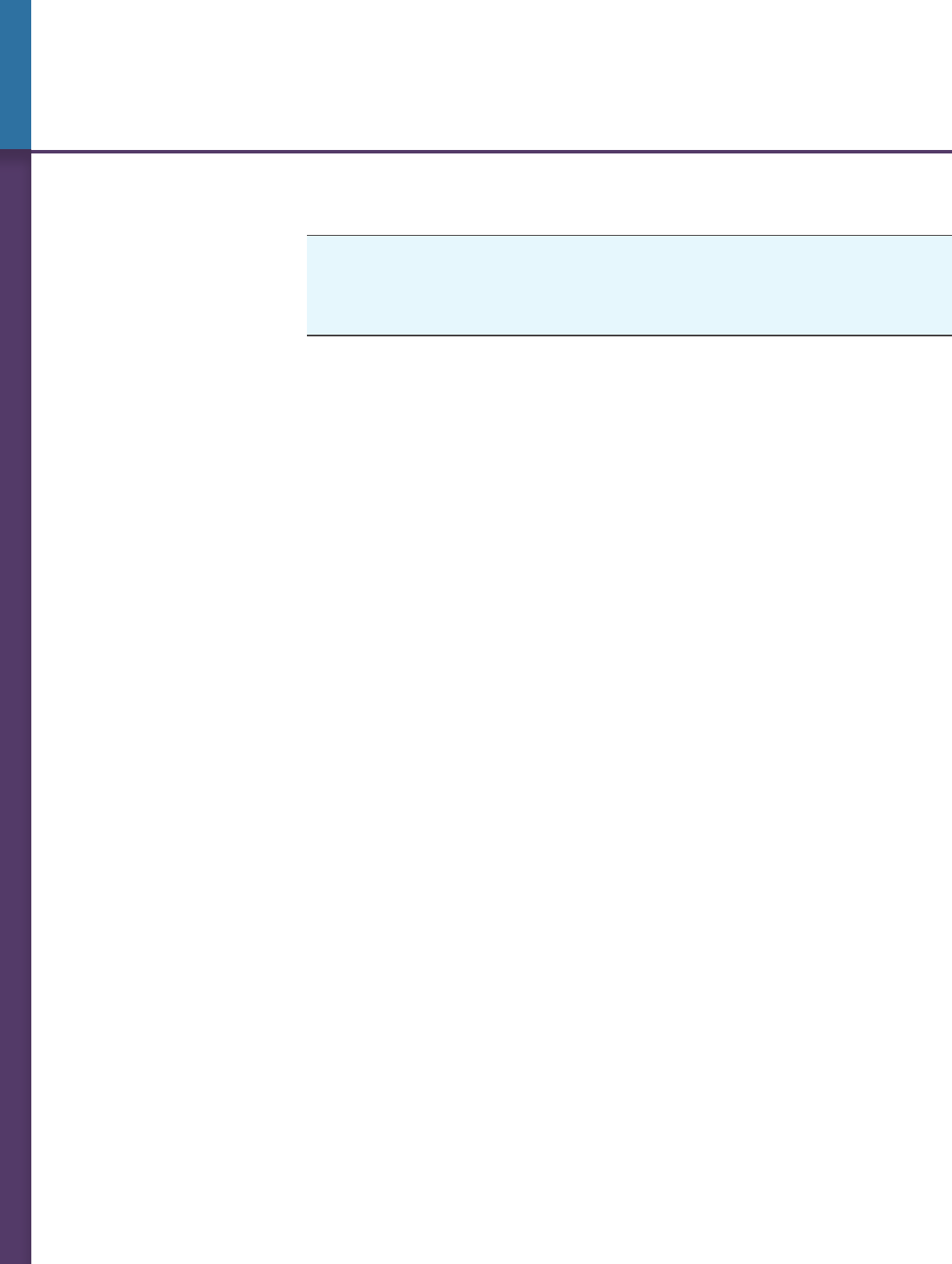
1-42 CHAPTER 1 Introduction to Financial Statements
share its nancial information, it does provide a di erent form of an annual report to external users. In
this report, the company provides information regarding its sustainability e orts.
Instructions
Go to the “Who We Are” page at the Clif Bar website and identify the company’s ve aspirations.
A Look at IFRS
LEARNING OBJECTIVE 4
Describe the impact of international accounting standards on U.S. financial
reporting.
Many people feel that there is a need for one set of international accounting standards. Here is why:
Multinational corporations. Today’s companies view the entire world as their market. For example,
Coca-Cola, Intel, and McDonald’s generate more than 50% of their sales outside the United States.
Many foreign companies, such as
Toyota, Nestlé, and Sony, nd their largest market to be the United
States.
Mergers and acquisitions. The mergers between
Fiat/Chrysler and Vodafone/Mannesmann suggest
that we will see even more such business combinations of companies from di erent countries in the
future.
Information technology. As communication barriers continue to topple through advances in technol-
ogy, companies and individuals in di erent countries and markets are becoming more comfortable buy-
ing and selling goods and services from one another.
Financial markets. Financial markets are of international signi cance today. Whether it is currency,
equity securities (stocks), bonds, or derivatives, there are active markets throughout the world trading
these types of instruments.
Key Points
Following are the key similarities and di erences between GAAP and IFRS as related to accounting
fundamentals.
Similarities
• The basic techniques for recording business transactions are the same for U.S. and international
companies.
• Both international and U.S. accounting standards emphasize transparency in financial re-
porting. Both sets of standards are primarily driven by meeting the needs of investors and
creditors.
• The three most common forms of business organizations, proprietorships, partnerships, and cor-
porations, are also found in countries that use international accounting standards.
Di erences
• International standards are referred to as International Financial Reporting Standards (IFRS),
developed by the International Accounting Standards Board. Accounting standards in the United
States are referred to as generally accepted accounting principles (GAAP) and are developed by
the Financial Accounting Standards Board.
• IFRS tends to be simpler in its accounting and disclosure requirements; some people say it is more
“principles-based.” GAAP is more detailed; some people say it is more “rules-based.”
• The internal control standards applicable to Sarbanes-Oxley (SOX) apply only to large public com-
panies listed on U.S. exchanges. There is continuing debate as to whether non-U.S. companies
should have to comply with this extra layer of regulation.
c01IntroductionToFinancialStatements.indd Page 1-42 02/11/18 10:15 AM F-0590 c01IntroductionToFinancialStatements.indd Page 1-42 02/11/18 10:15 AM F-0590 /208/WB02470/XXXXXXXXXXXX/ch01/text_s/208/WB02470/XXXXXXXXXXXX/ch01/text_s
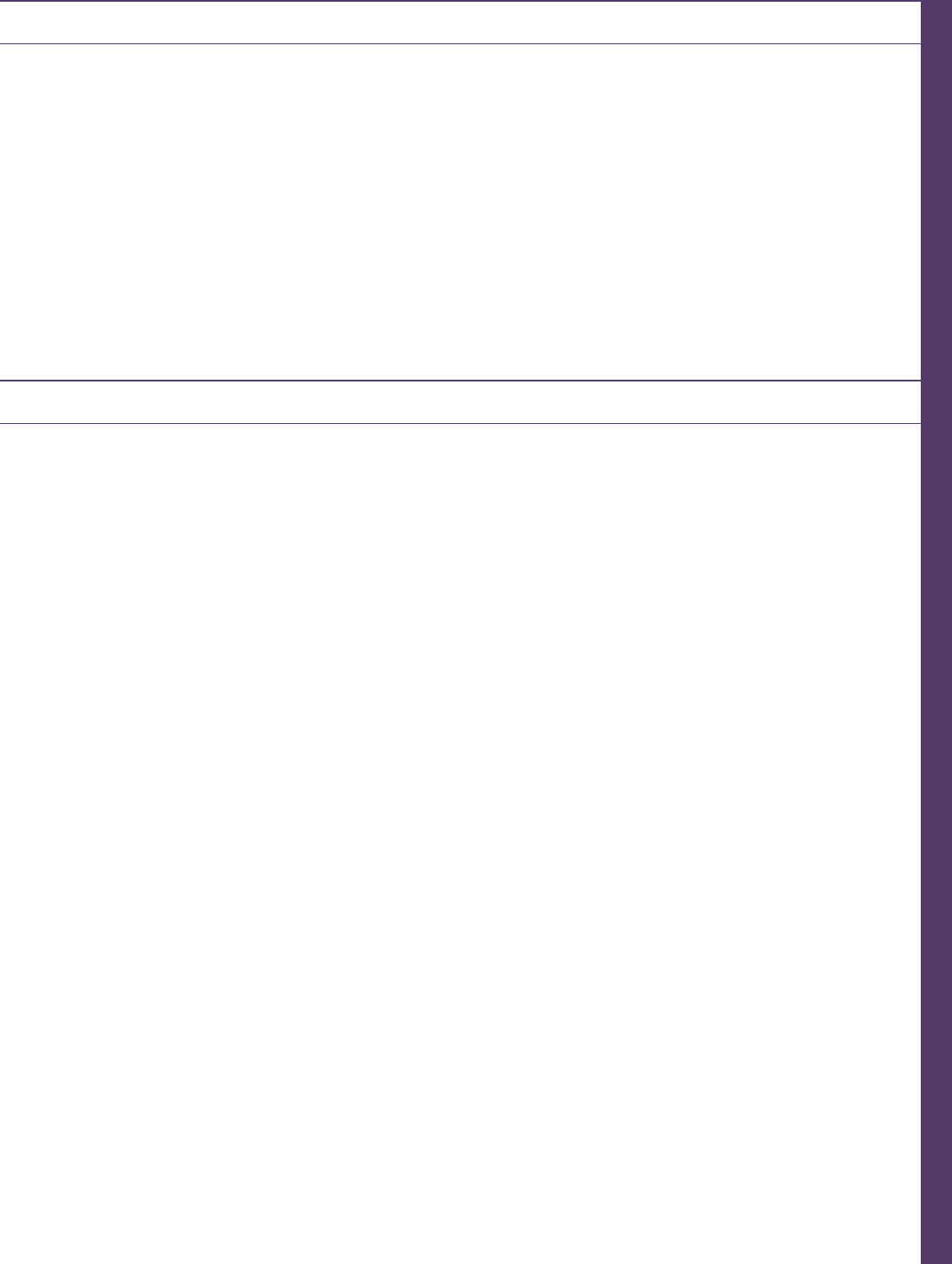
A Look at IFRS 1-43
IFRS Practice
IFRS Self-Test Questions
1. Which of the following is not a reason why a single set of high-quality
international accounting standards would be bene cial?
a. Mergers and acquisition activity.
b. Financial markets.
c. Multinational corporations.
d. GAAP is widely considered to be a superior reporting system.
2. The Sarbanes-Oxley Act determines:
a. international tax regulations.
b. internal control standards as enforced by the IASB.
c. internal control standards of U.S. publicly traded companies.
d. U.S. tax regulations.
3. IFRS is considered to be more:
a. principles-based and less rules-based than GAAP.
b. rules-based and less principles-based than GAAP.
c. detailed than GAAP.
d. None of the above.
IFRS Exercises
IFRS1.1 Who are the two key international players in the development of international accounting
standards? Explain their role.
IFRS1.2 What is the bene t of a single set of high-quality accounting standards?
International Financial Reporting Problem: Louis Vuitton
IFRS1.3 The nancial statements of Louis Vuitton are presented in Appendix F. The complete annual
report, including the notes to its nancial statements, is available at the company’s website.
Instructions
Answer the following questions from the company’s 2016 annual report.
a. What accounting rm performed the audit of Louis Vuitton’s nancial statements?
b. What is the address of the company’s corporate headquarters?
c. What is the company’s reporting currency?
Answers to IFRS Self-Test Questions
1. d 2. c 3. a
c01IntroductionToFinancialStatements.indd Page 1-43 02/11/18 10:15 AM F-0590 c01IntroductionToFinancialStatements.indd Page 1-43 02/11/18 10:15 AM F-0590 /208/WB02470/XXXXXXXXXXXX/ch01/text_s/208/WB02470/XXXXXXXXXXXX/ch01/text_s
c01IntroductionToFinancialStatements.indd Page 1-44 02/11/18 10:15 AM F-0590 c01IntroductionToFinancialStatements.indd Page 1-44 02/11/18 10:15 AM F-0590 /208/WB02470/XXXXXXXXXXXX/ch01/text_s/208/WB02470/XXXXXXXXXXXX/ch01/text_s
